GARDENING IN HARMONY WITH NATURE IN THE NORTHEAST
Woodland Plants
Even in the midst of summer, where the forest floor may be almost completely shaded and tree roots compete for soil moisture, a few well-adapted perennial woodland species in addition to the native ferns and sedges still thrive. These plants may have growth spurts in spring under more favorable light conditions, but unlike the spring ephemerals, they don’t go dormant in summer. Instead they provide valuable summer interest in dappled shade.
Some of the plants that we have already covered in woodland groundcovers or favorite hummingbird plants fall into this category and can be looked up there. Those tended to be the ones with showy flowers that are attractive to insects, hummingbirds, and humans alike. Good examples are woodland species from the phlox and lobelia families. Here, we explore the more subtle native herbaceous woodland plants that tend to fascinate through their foliage, and special attributes rather than through showy flowers.
What a wonderful plant to find in one’s woods. Jack in the Pulpit features two three-lobed leaves, one with a unique pitcher-plant-like flower and one without. Female plants produce bright red berry clusters in late summer, providing interest in fall even after the leaves have withered. The native (sub-) species of Jack in the Pulpit growing all around our woods is rather small, No more than 8 inches tall. We also purchased plants from nurseries and those are HUGE (up to 2 feet tall). Either way – Jack in the Pulpit is a must for an authentic Northeastern Woodland Garden.
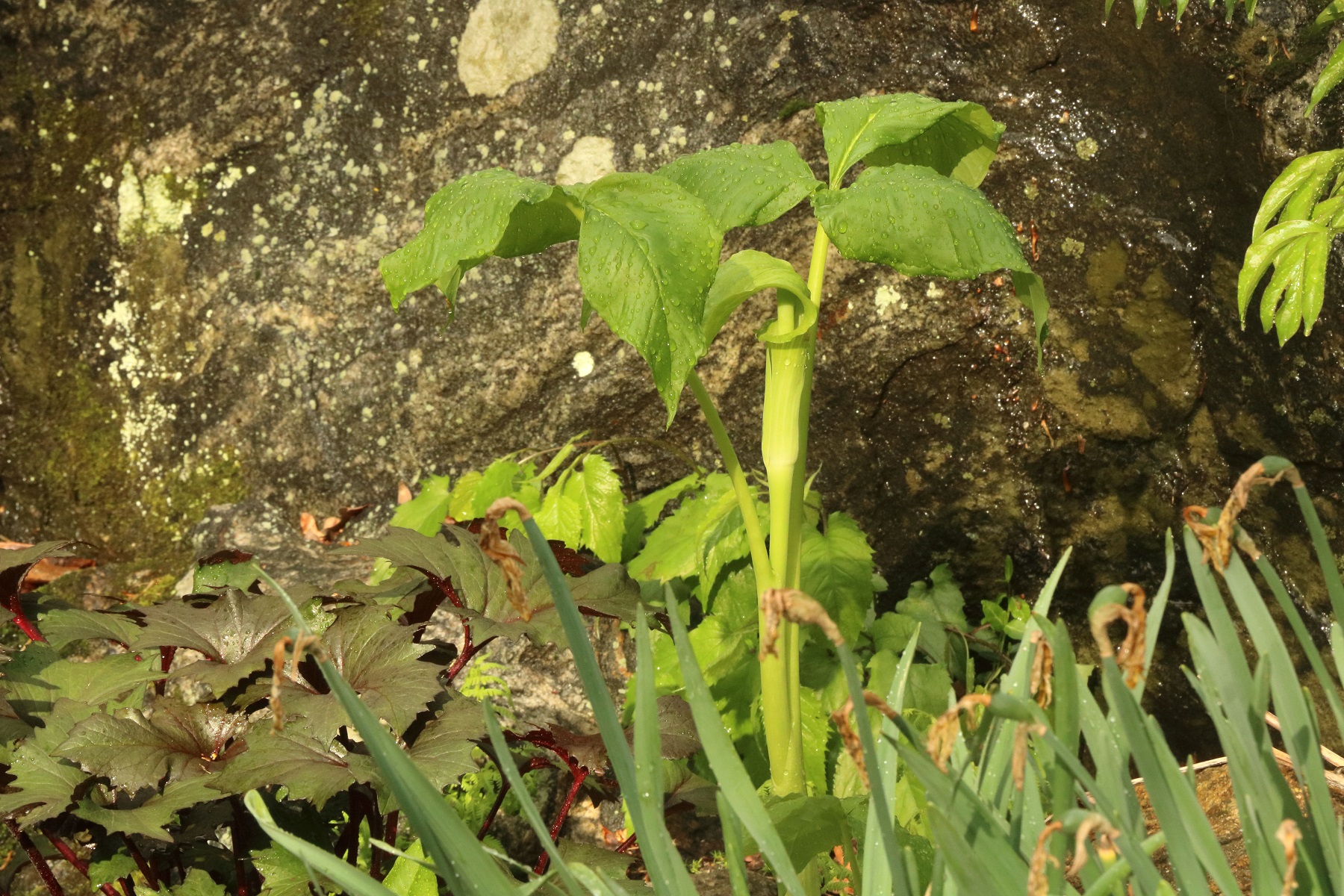
(Jack in the Pulpit)
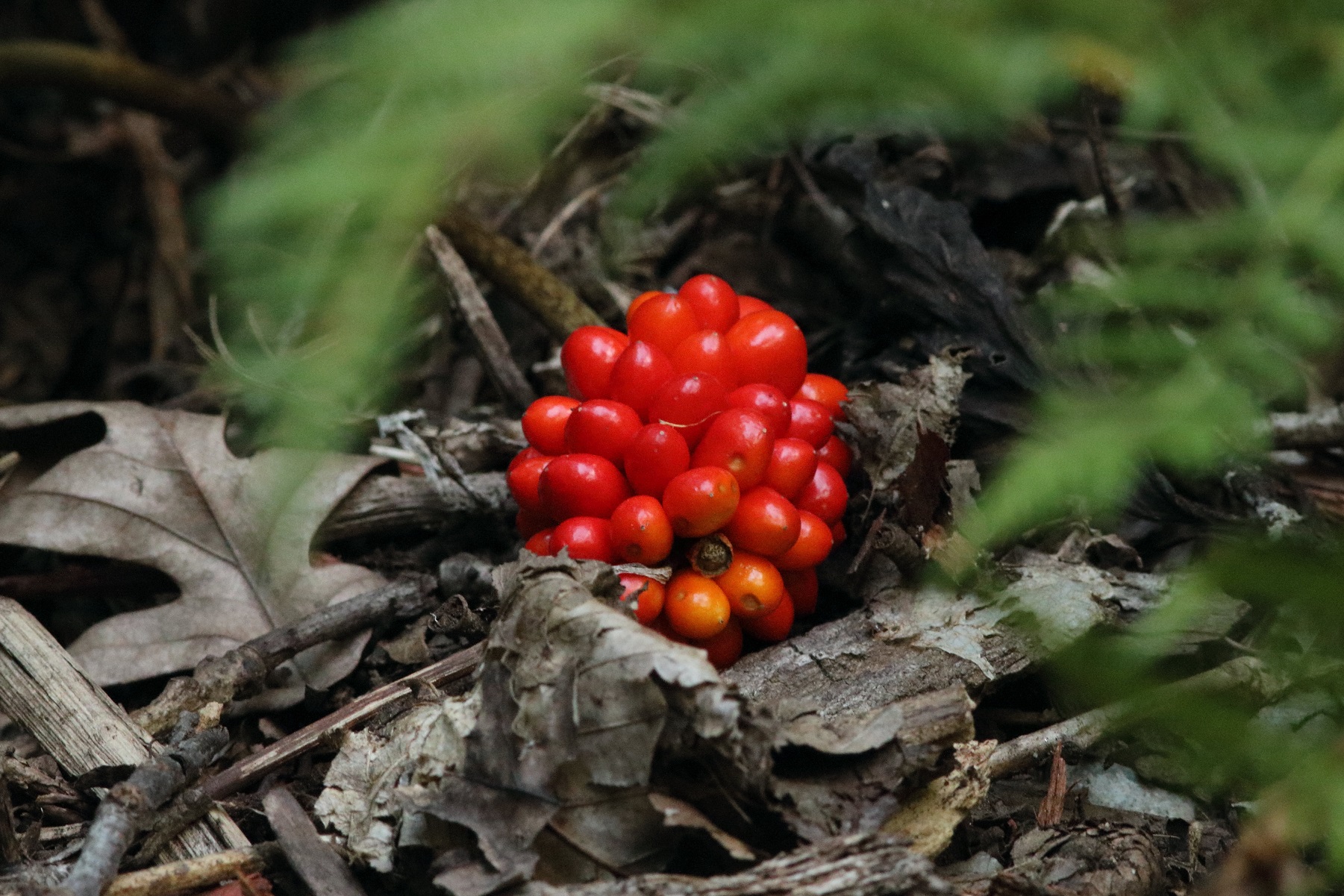
Green Dragon

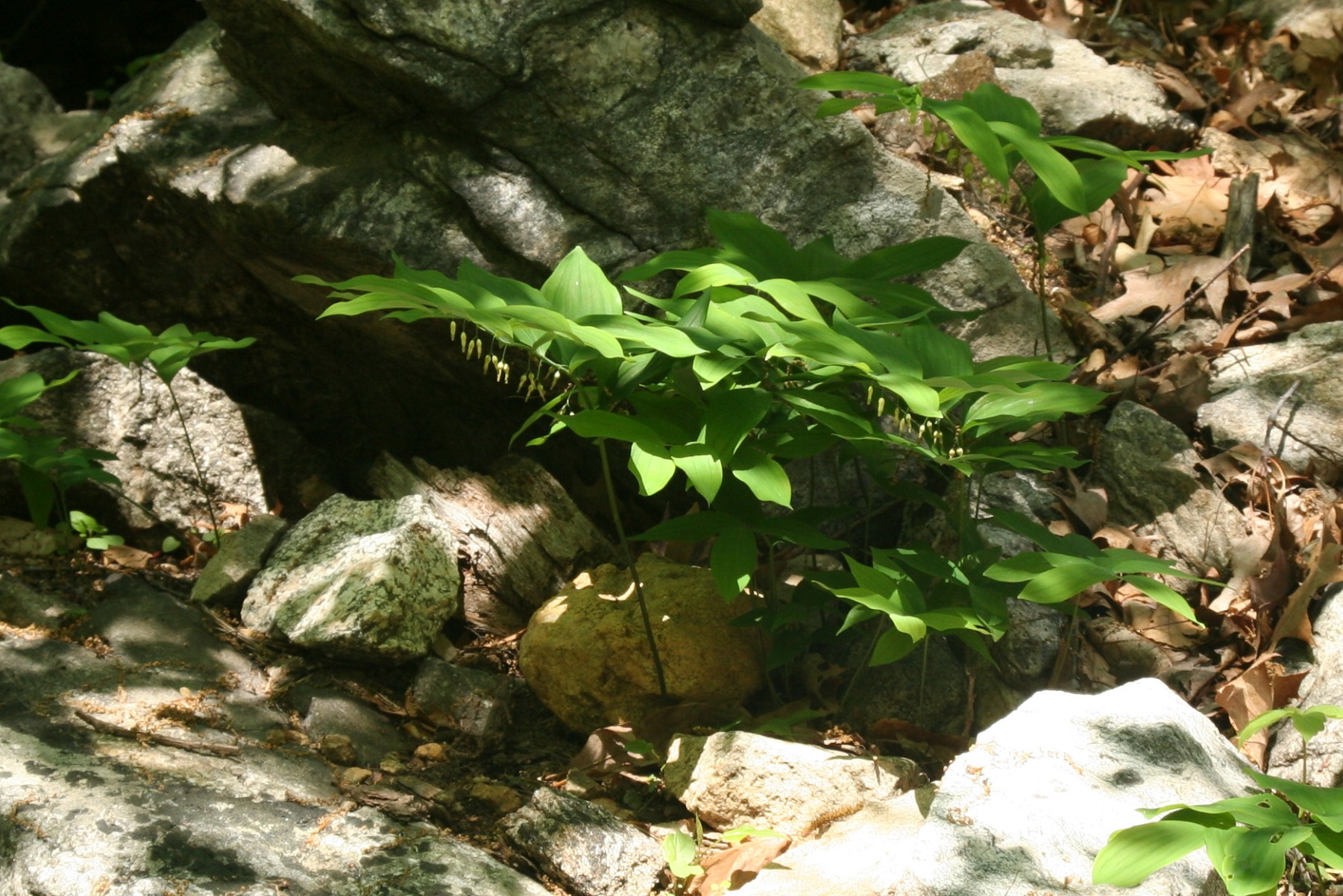

False Solomon’s Seal
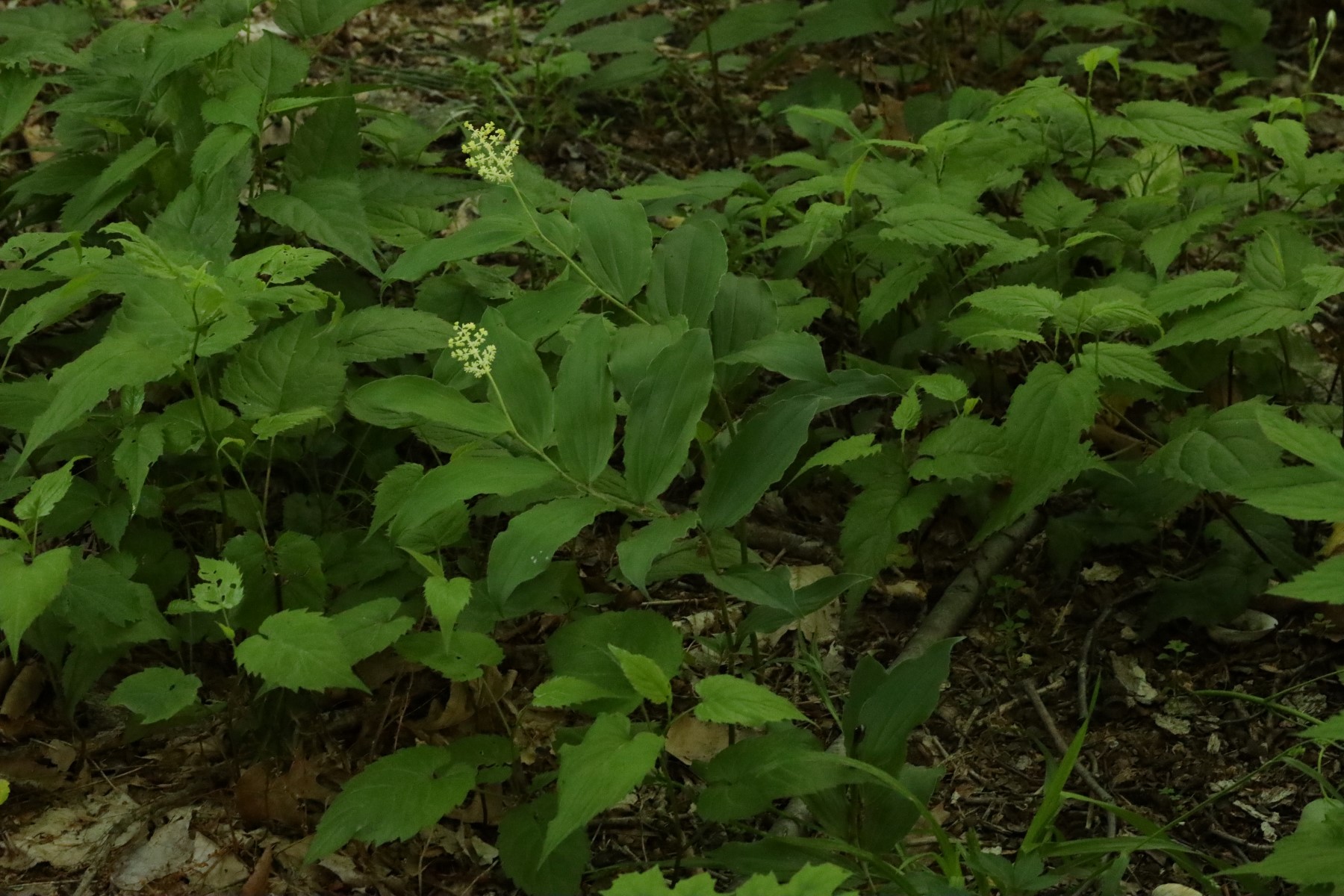
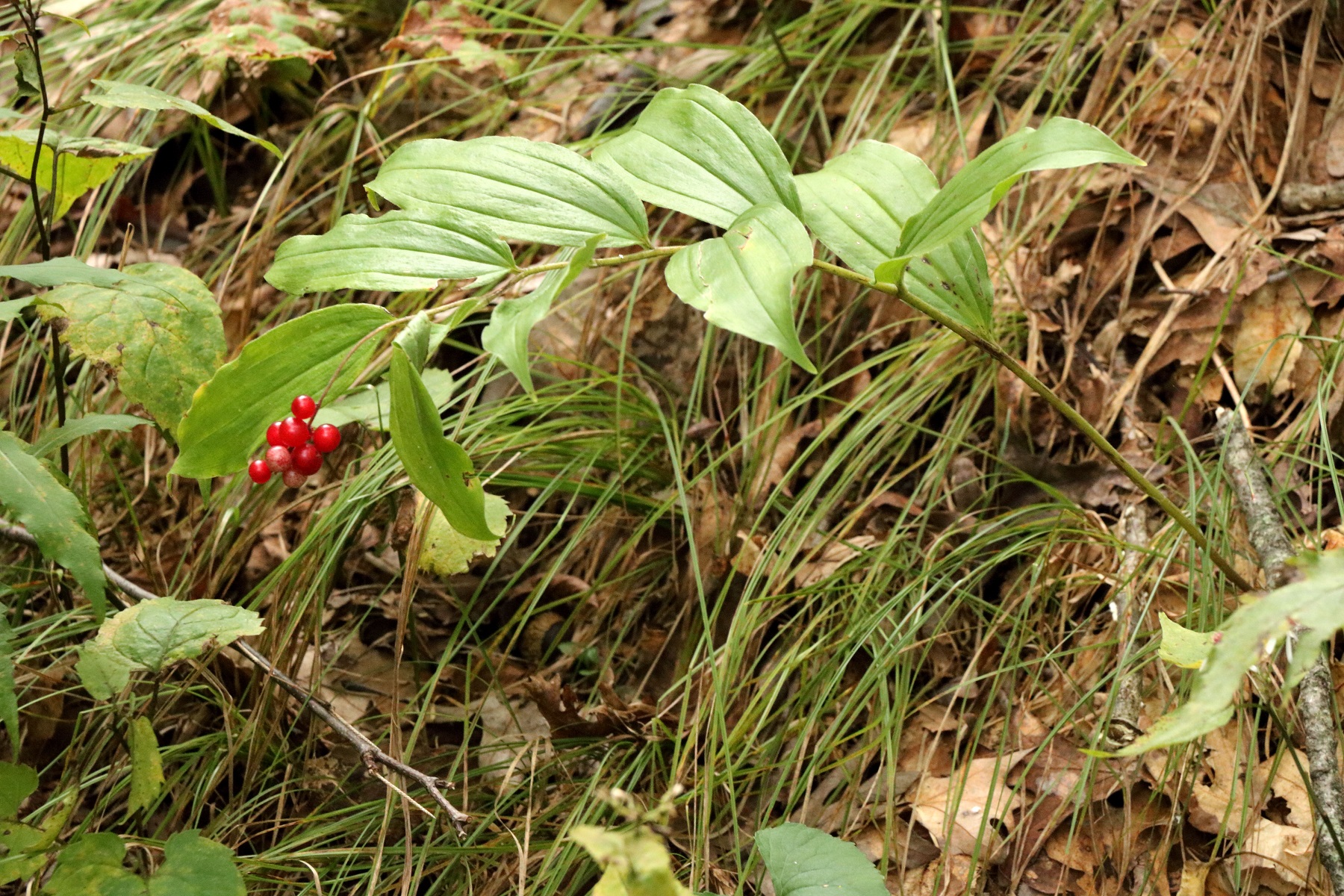
Blue Cohosh
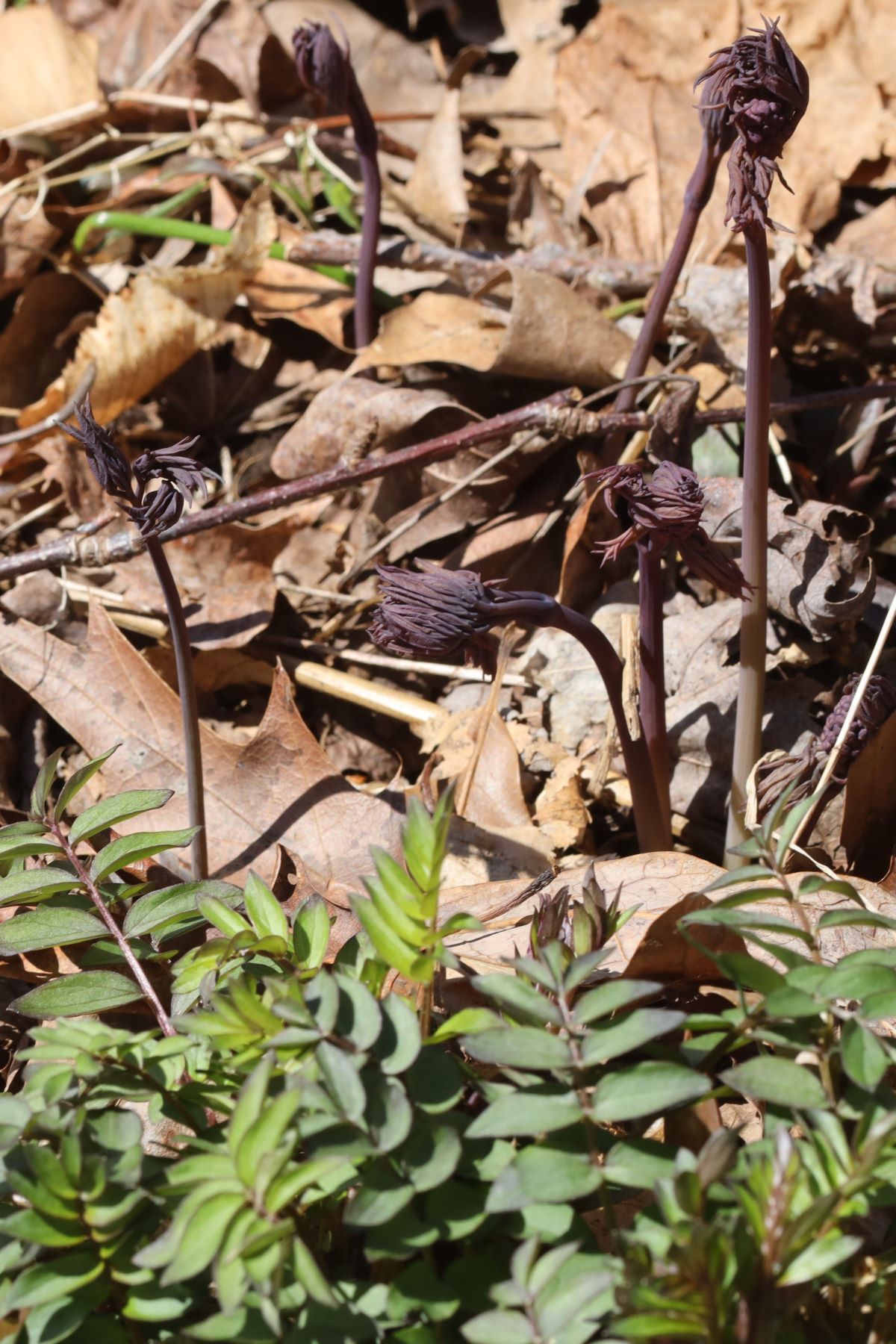
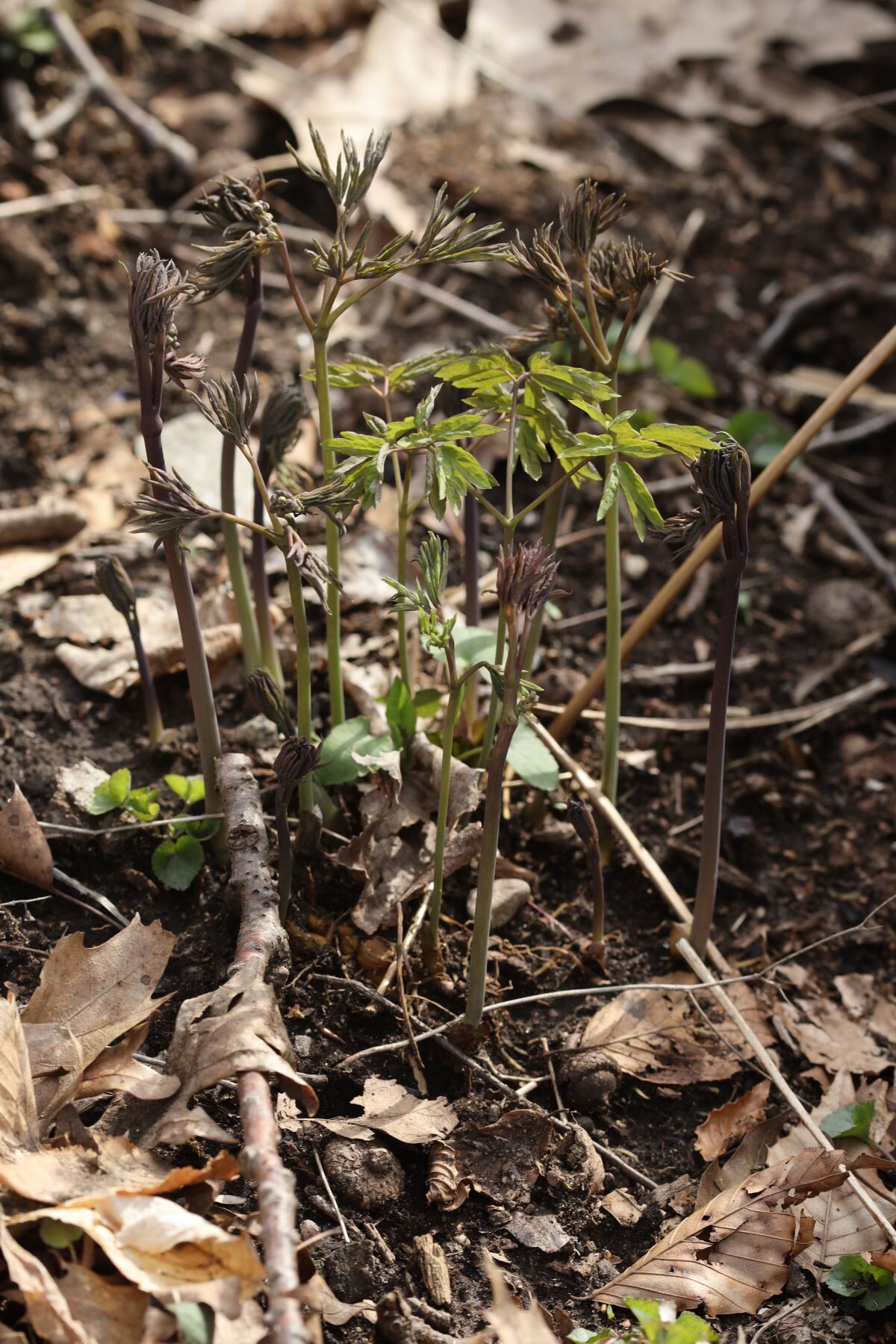
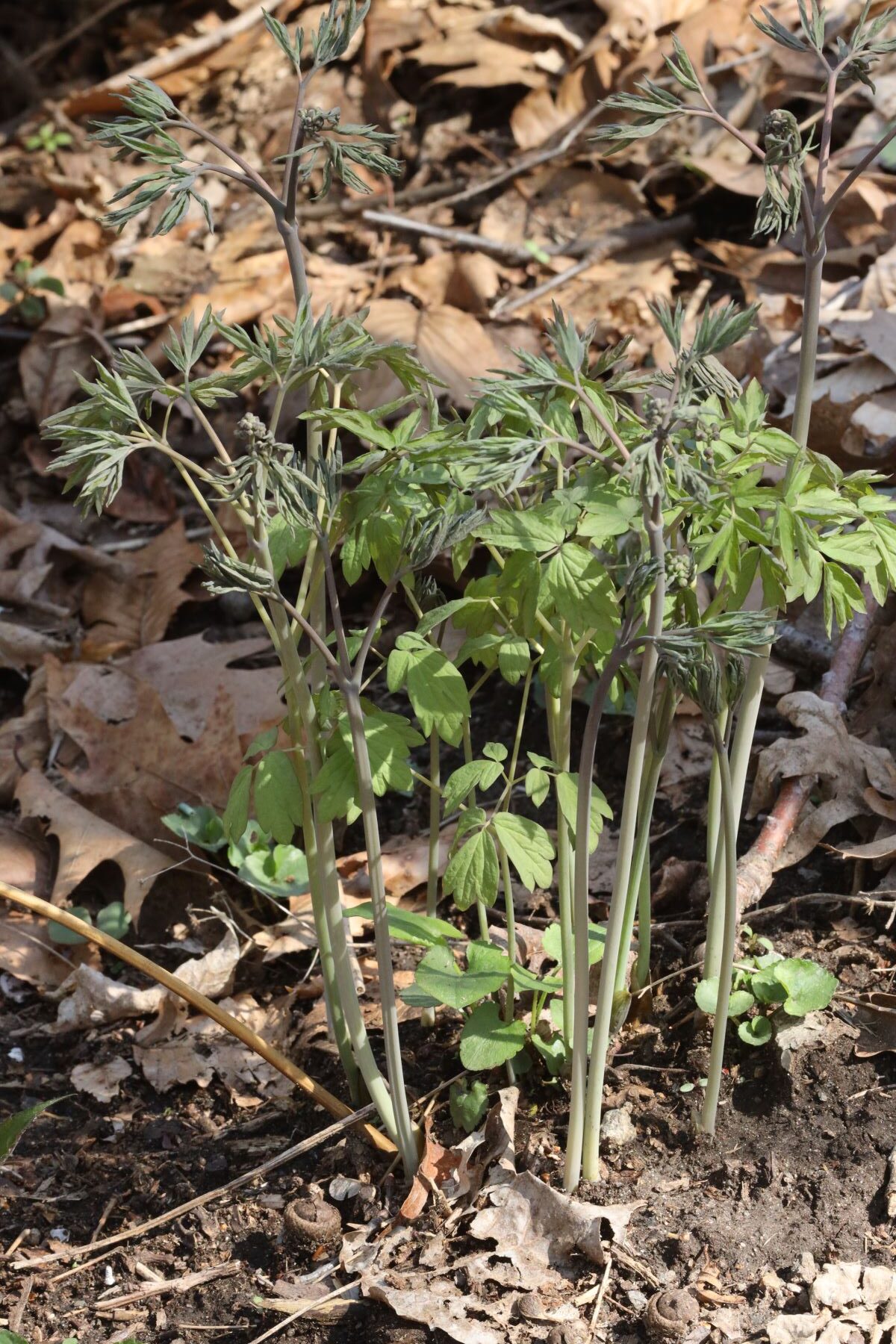
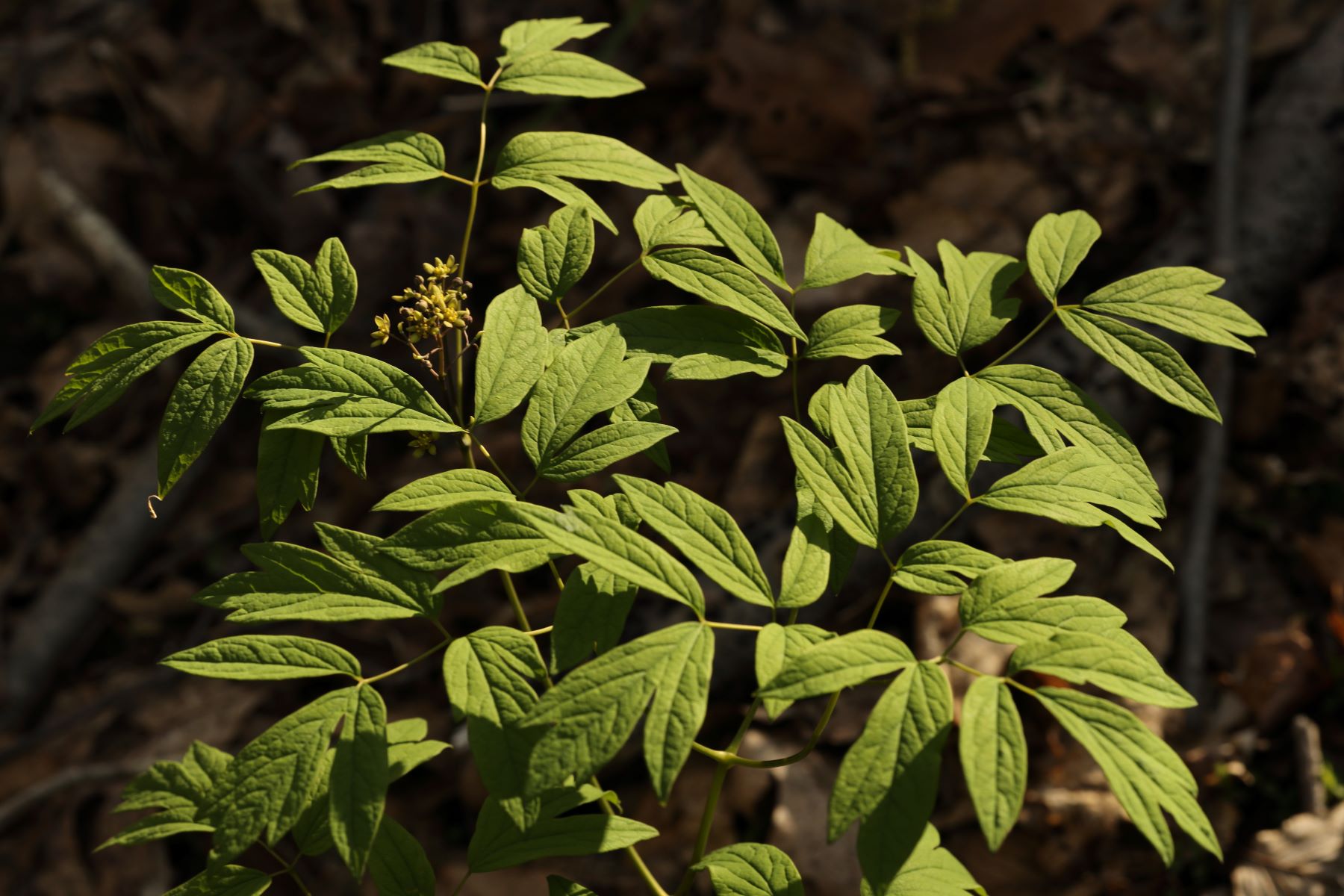
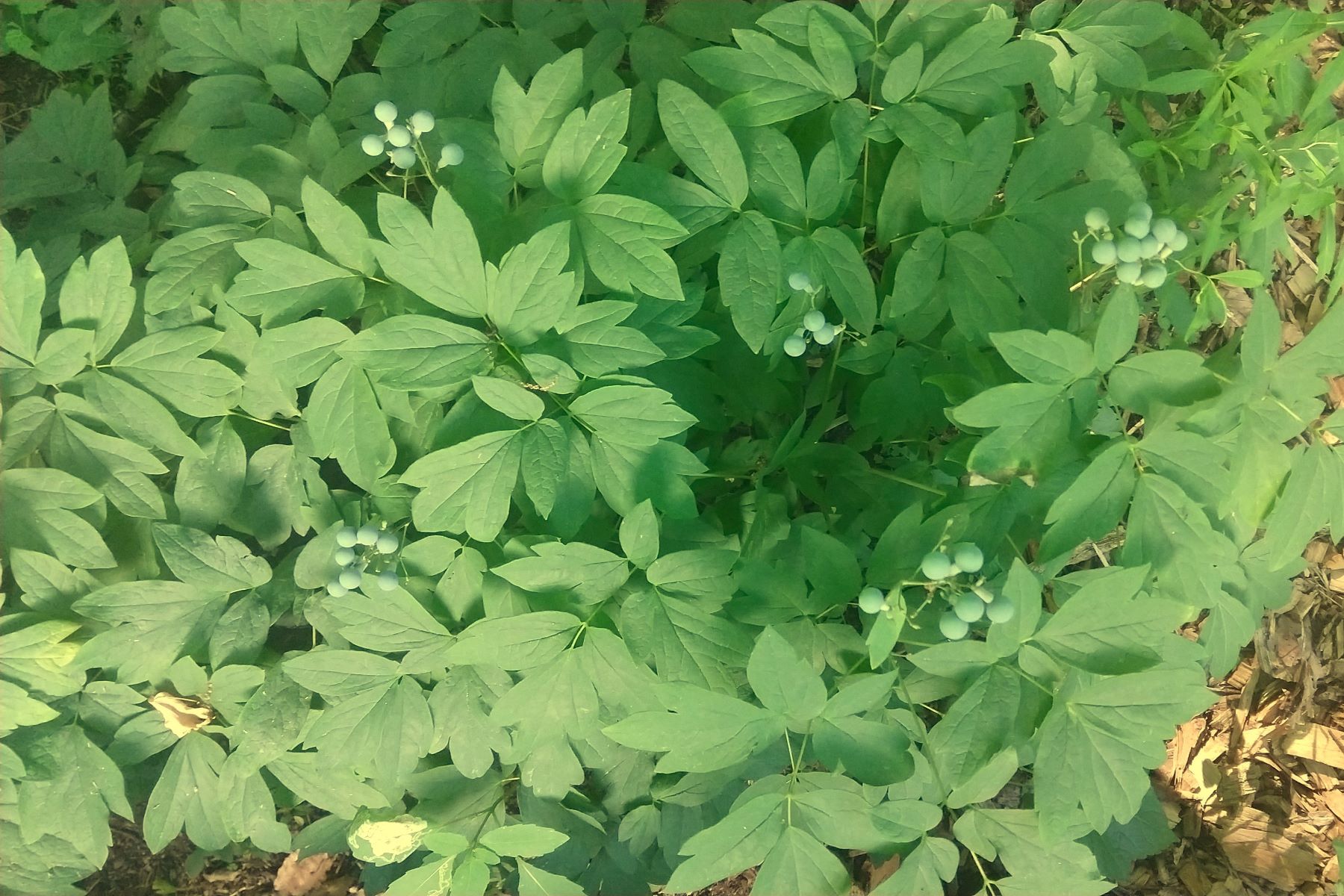
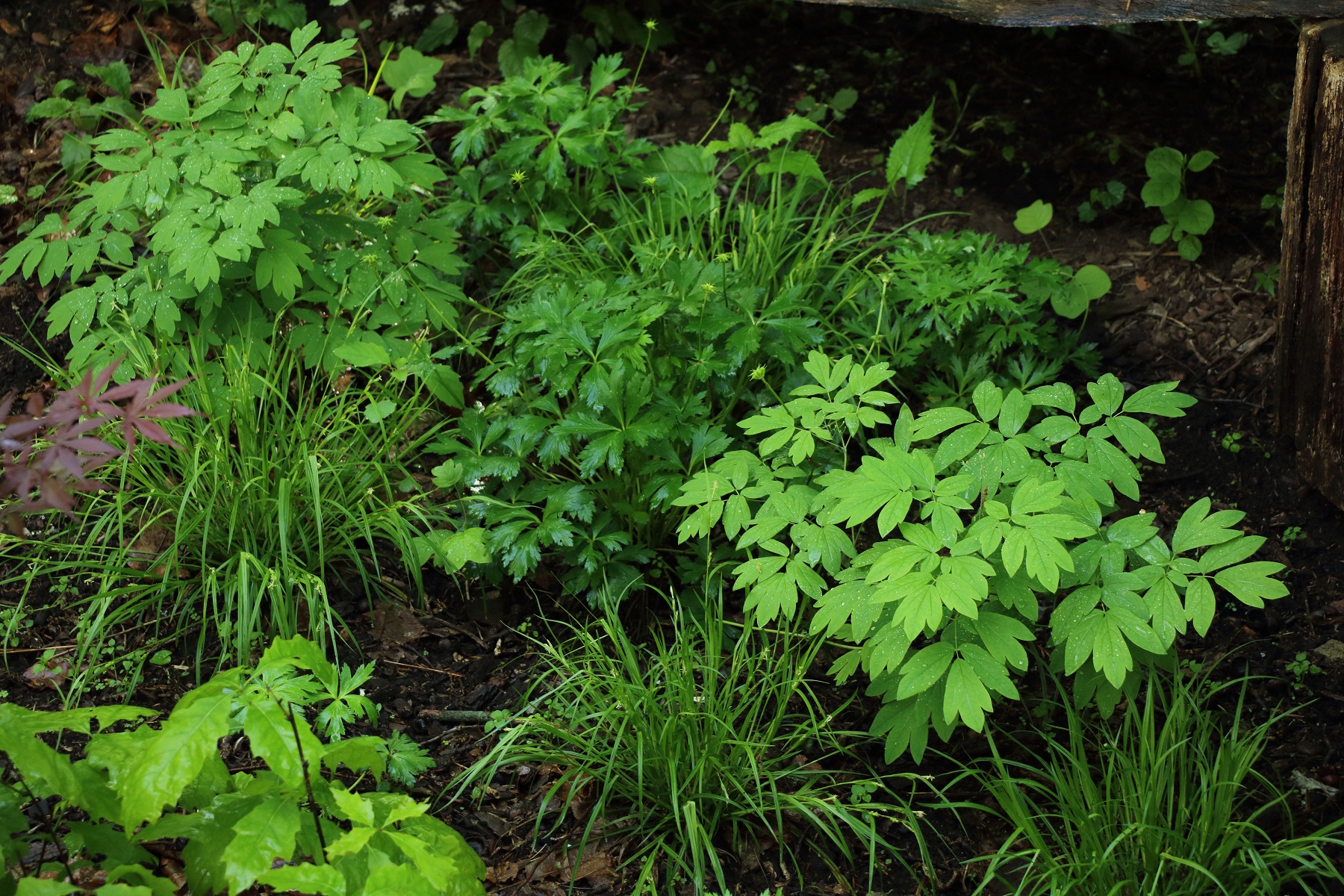
with American (Spreading) Globeflower and Creek Sedge
Black Cohosh
During flowering time Black Cohosh is very showy. This is a tall clumping plant with white spiky clusters of flowers towering over already quite substantial mounds of neat foliage. The flowers are followed by black seed. Black Cohosh grows naturally on a west-facing slope in quite a bit of shade on our property. It flowers better with some sun. Deer leave the foliage alone, but do nibble on the flowers.
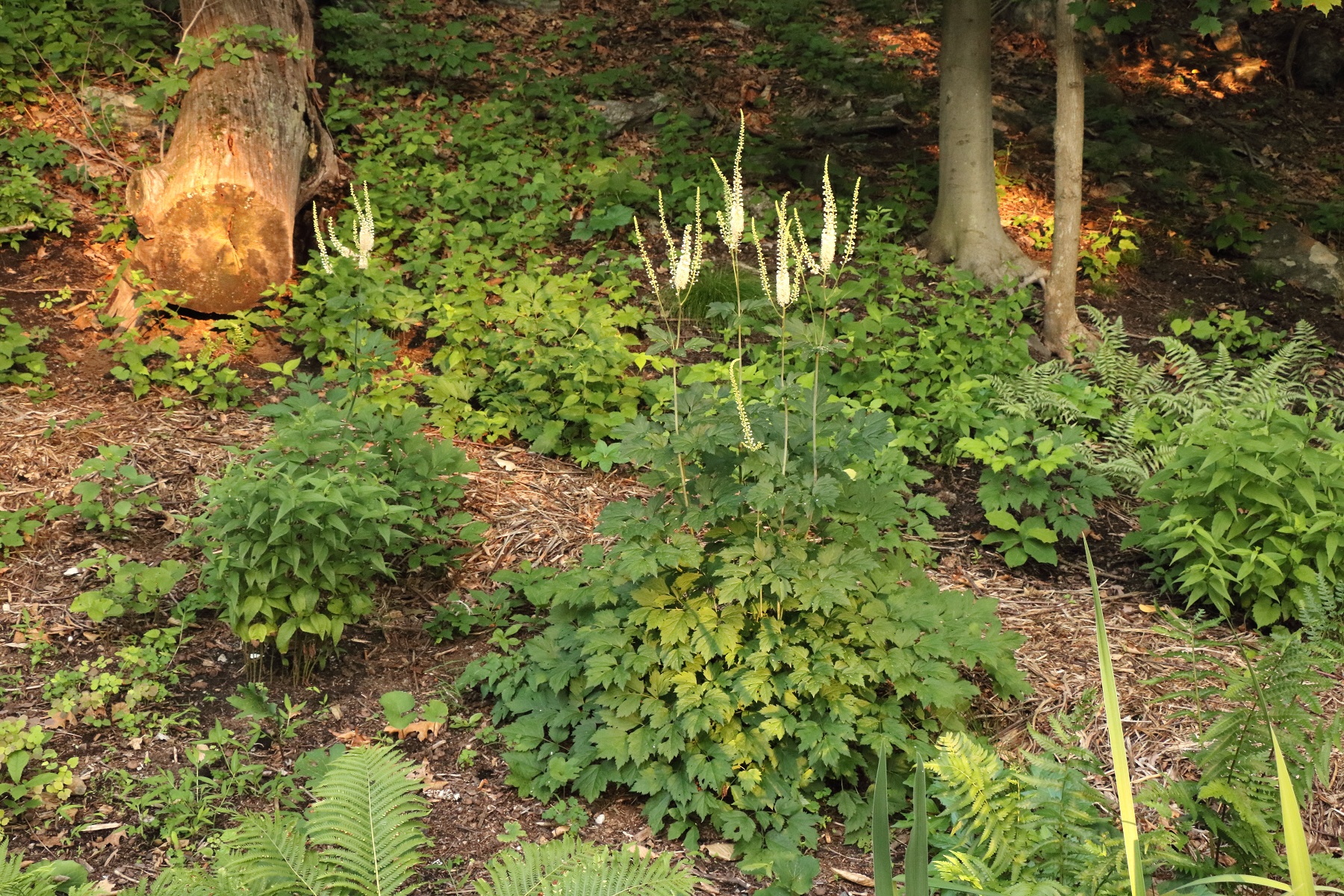
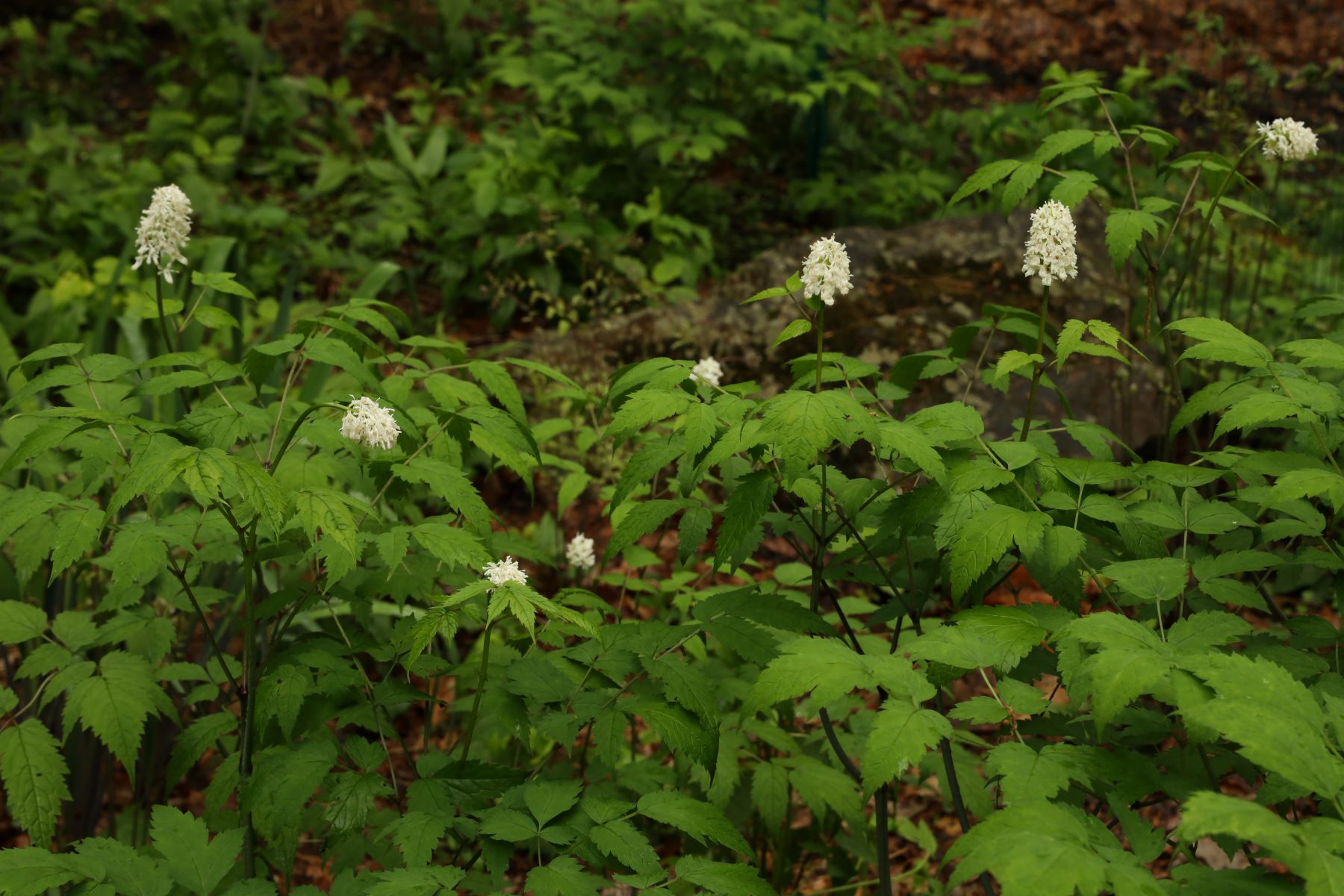


Doll's Eye Berries
Tall Thimbleweed sadly is a deer favorite, so you won’t be able to enjoy the wonderful seedheads in fall if this plant is not securely fenced in. White flowers in late spring last for a long time, and they even look good in cut flower arrangements.
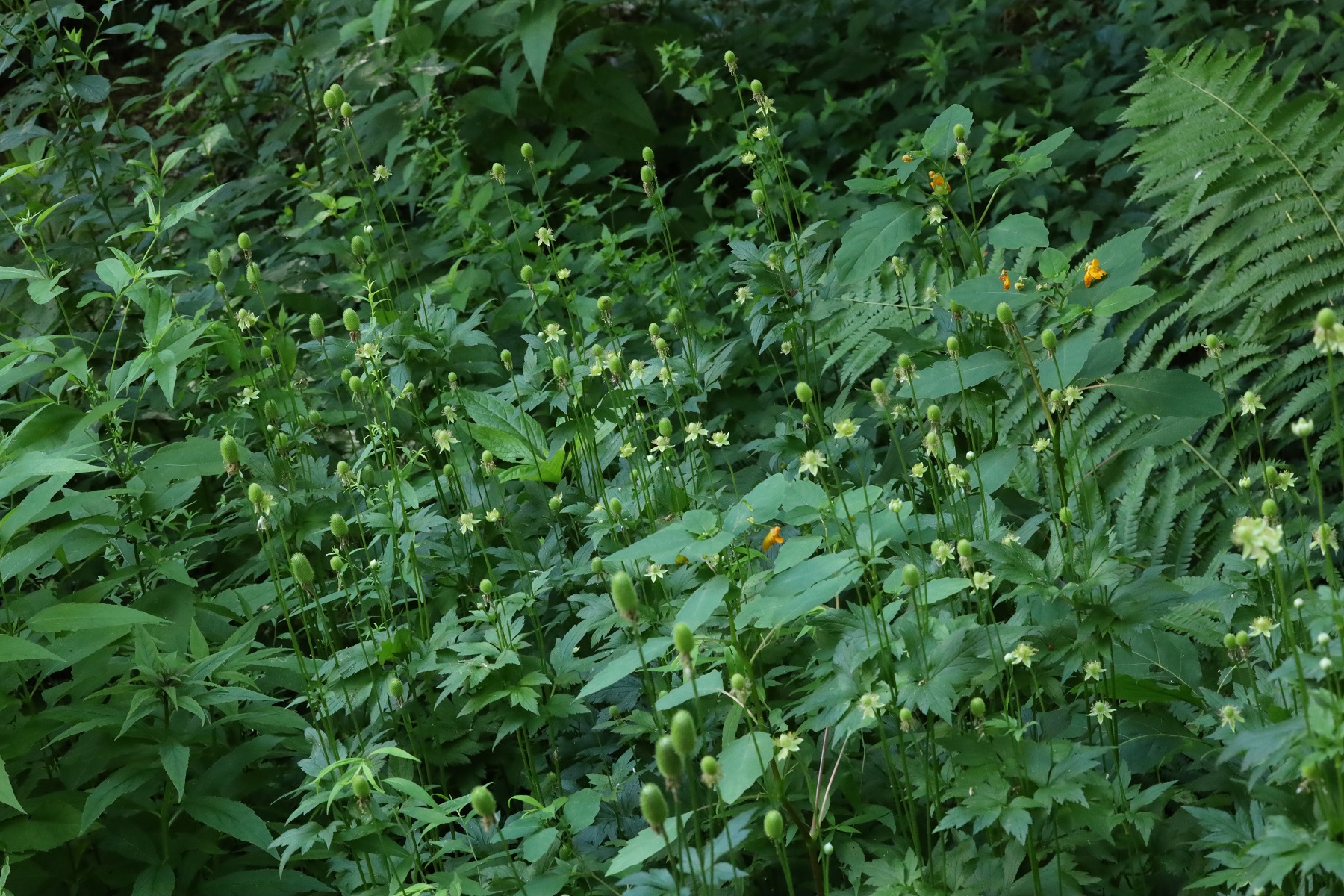
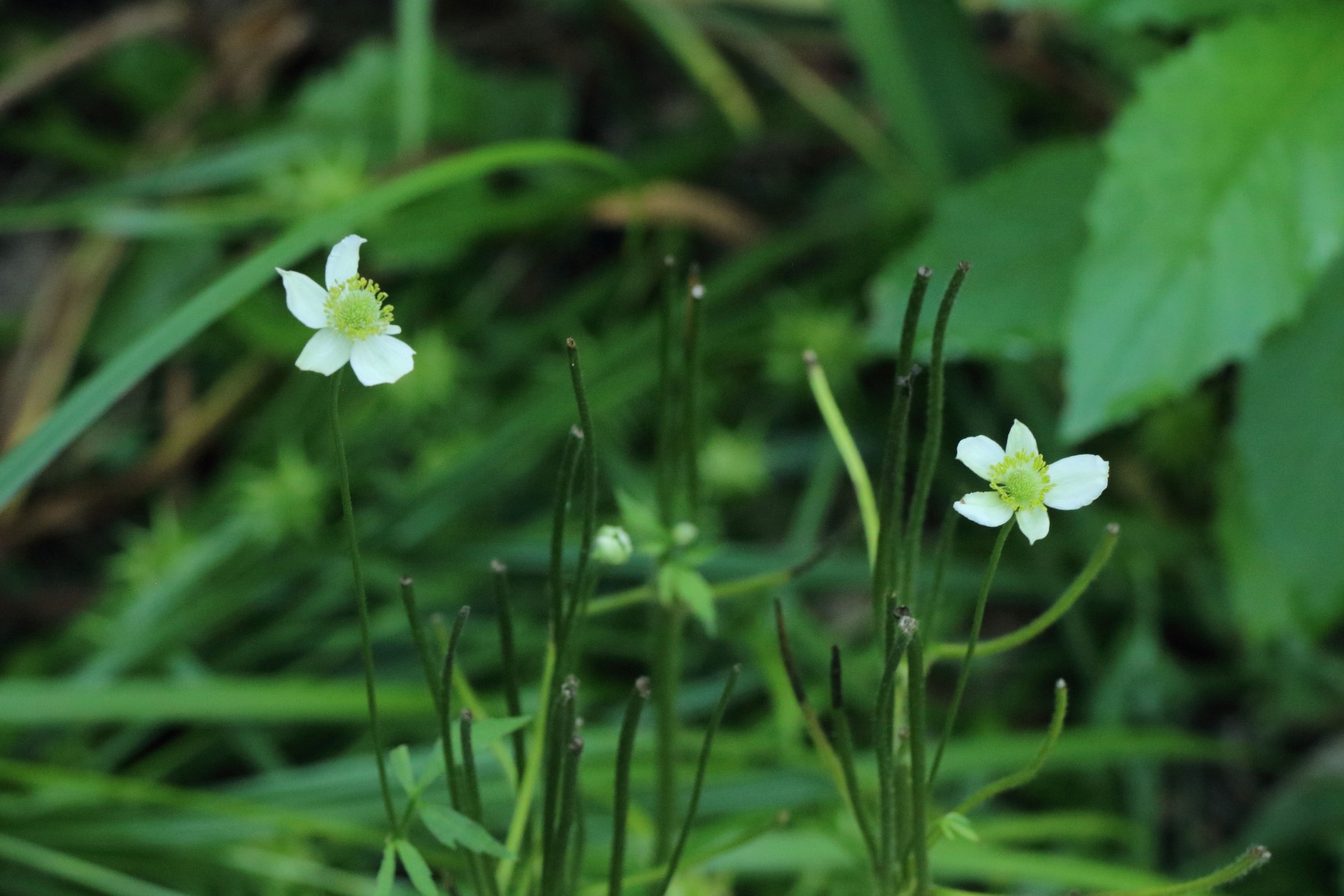
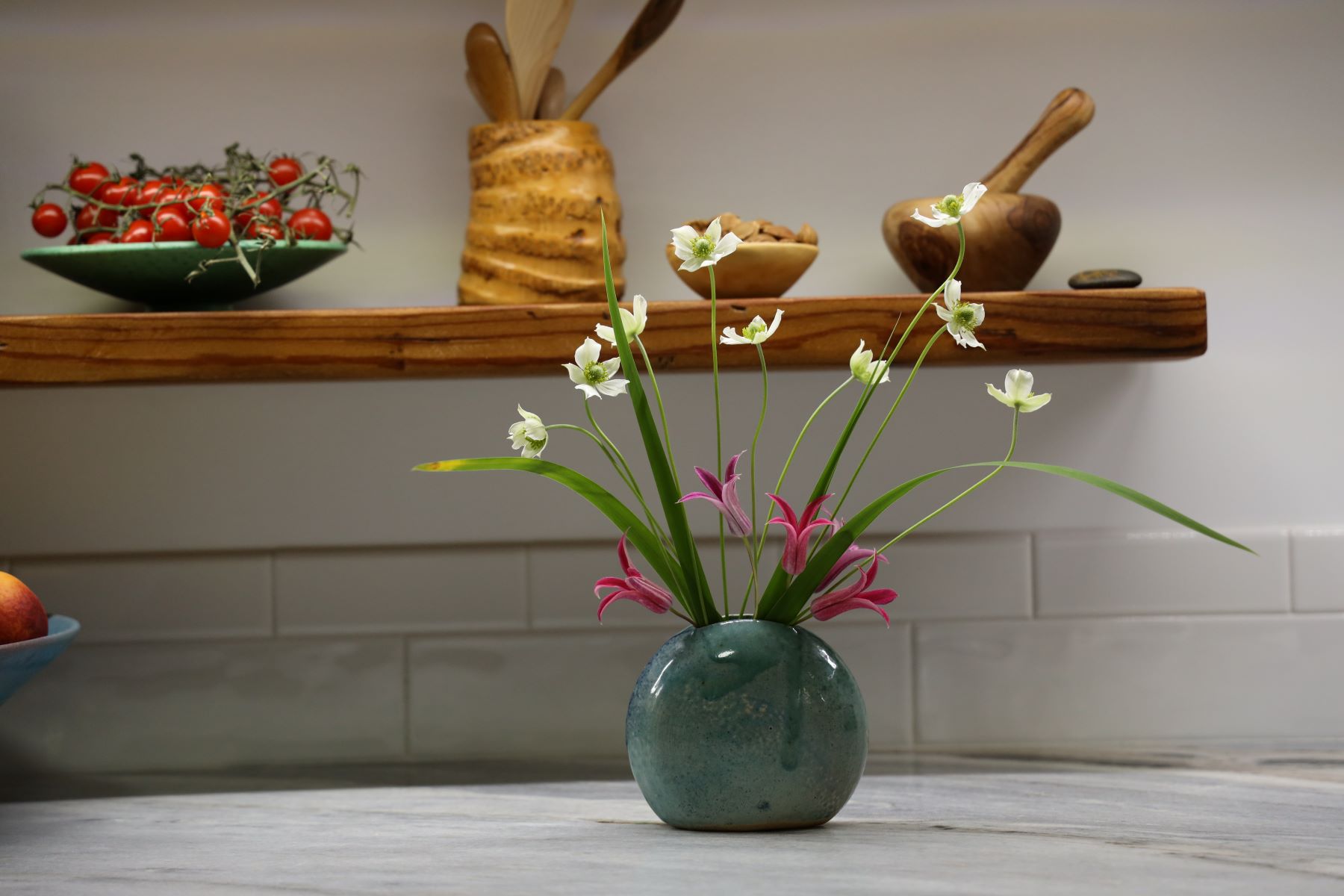
Common Blue Violet
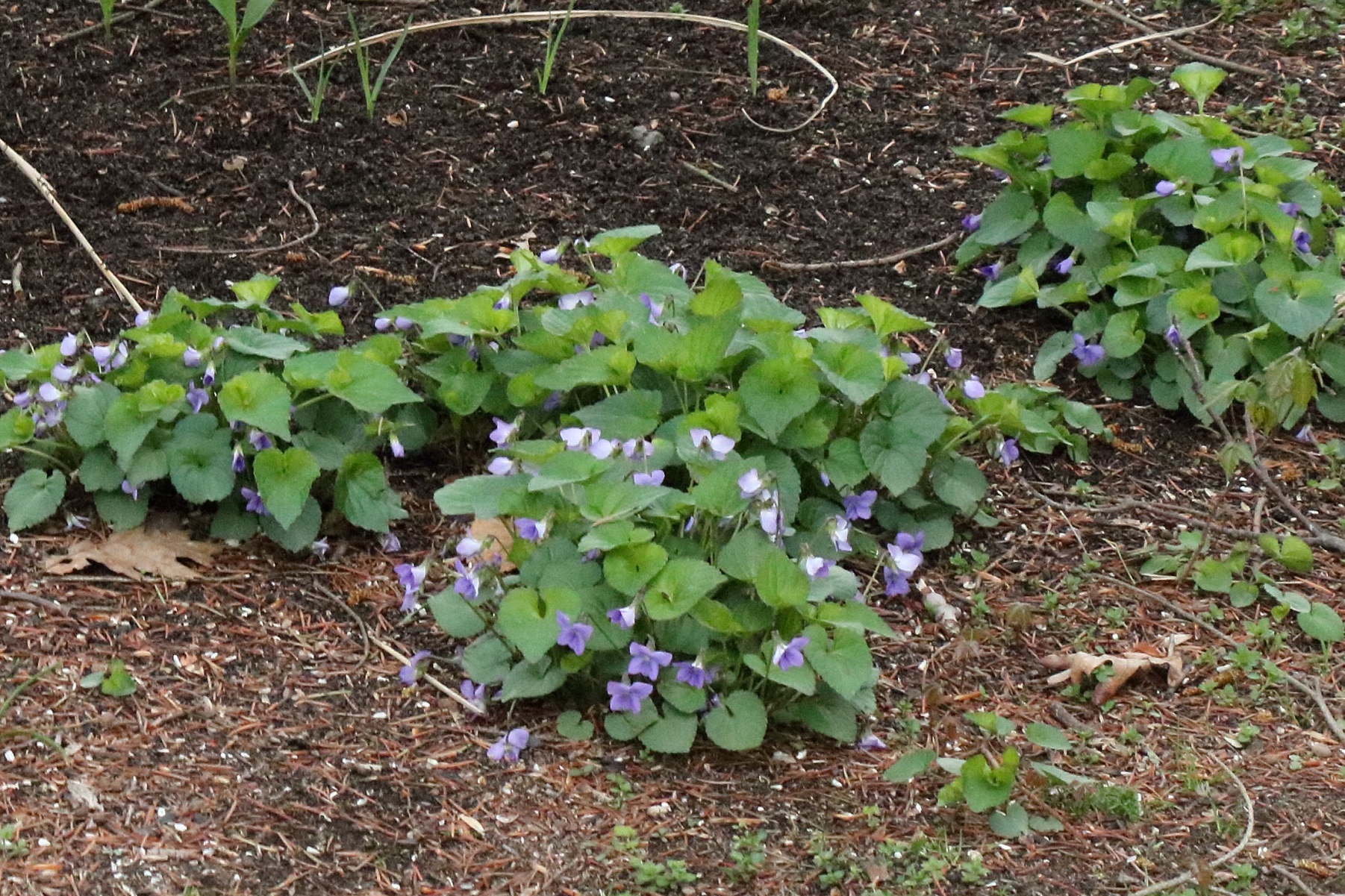
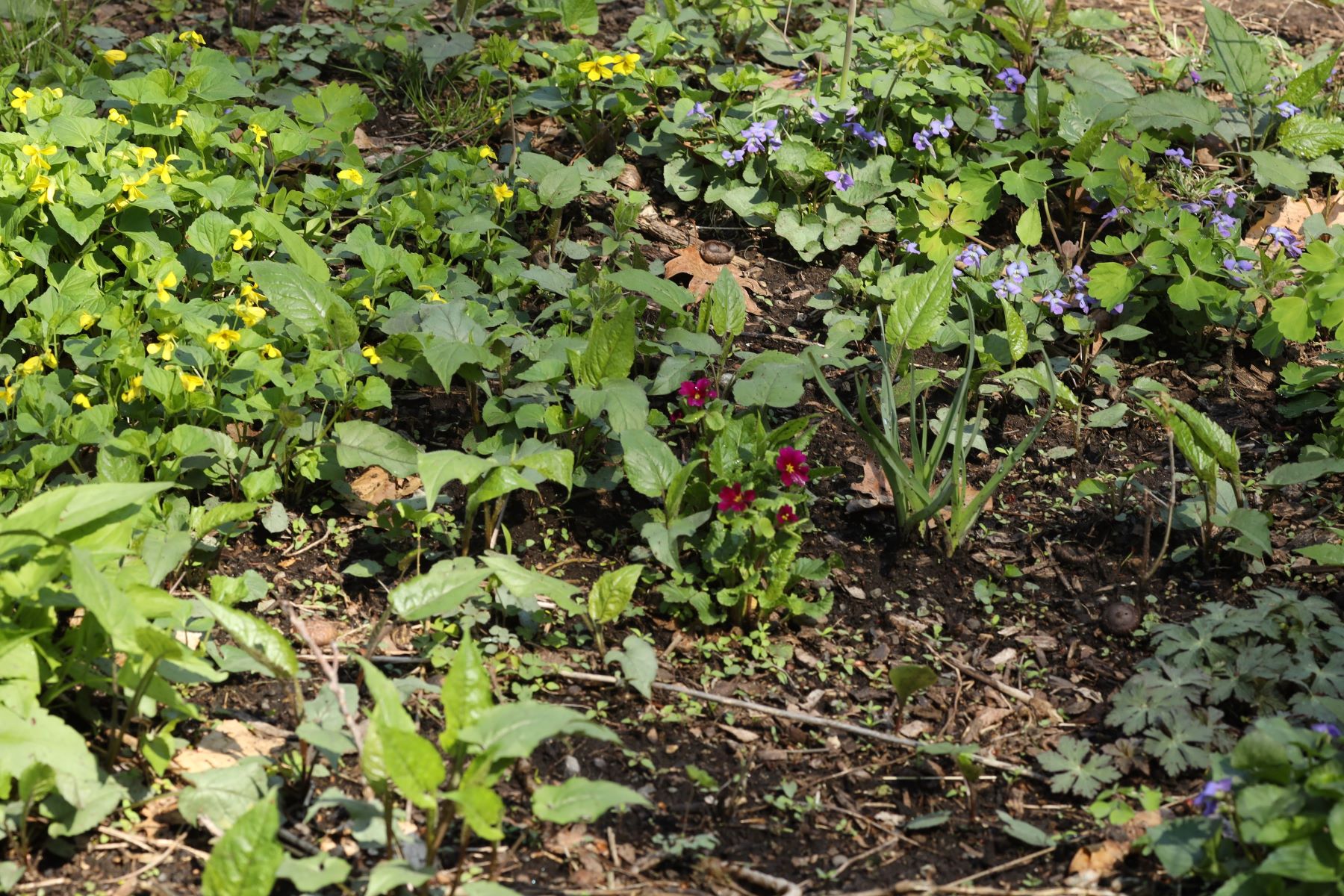
Canada Violet
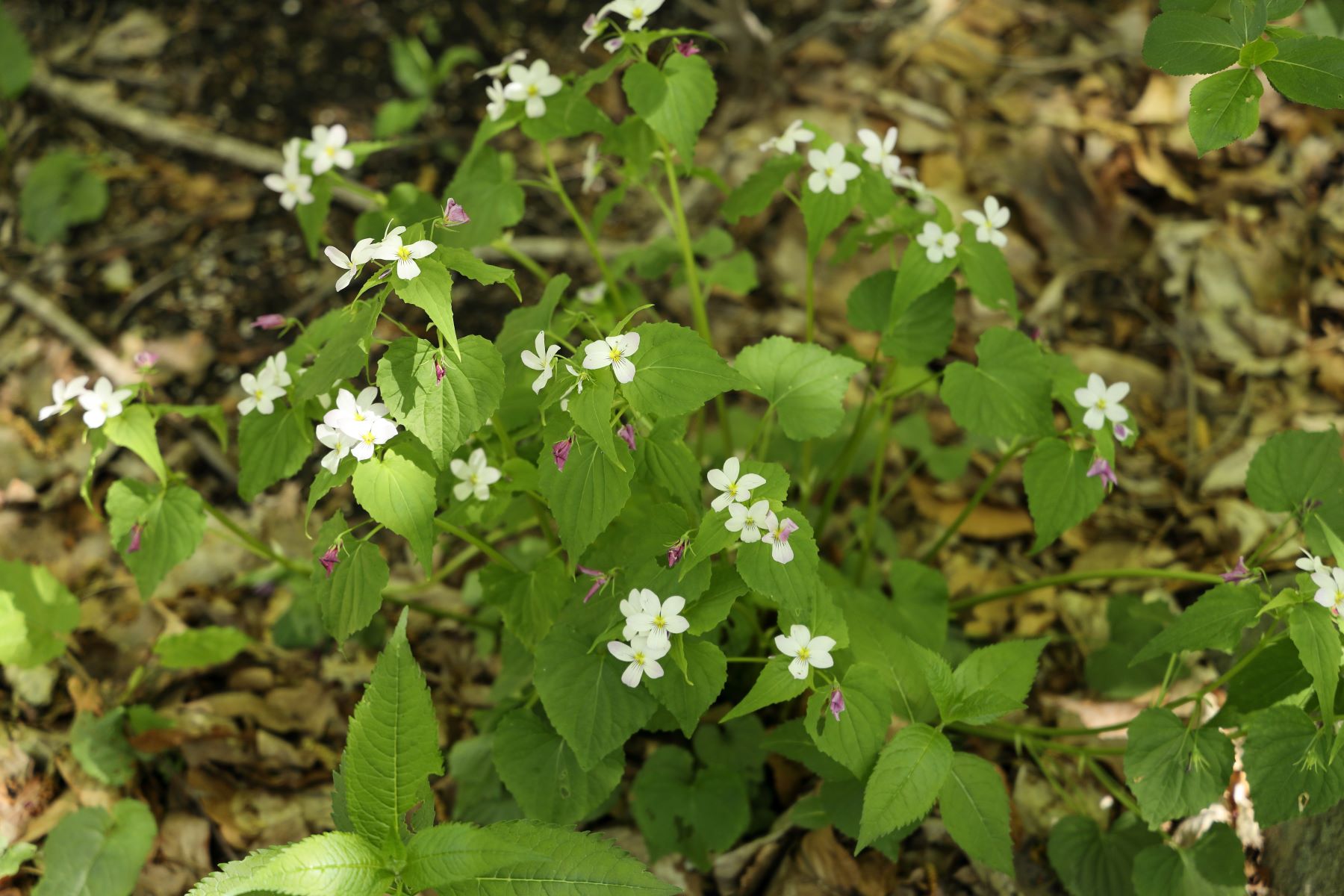
Spotted Geranium is an easy to grow native that is very tough but does not spread aggressively. Seedlings may pop up far from the mother plant. This 2′ plant carries purple flowers in profusion, especially when it gets some sun. It will grow in full shade as well. A dark cultivar (Geranium maculatum ‘Espresso’) has even more interesting brown foliage, which makes it a great accent plant. The straight species shines when massed.
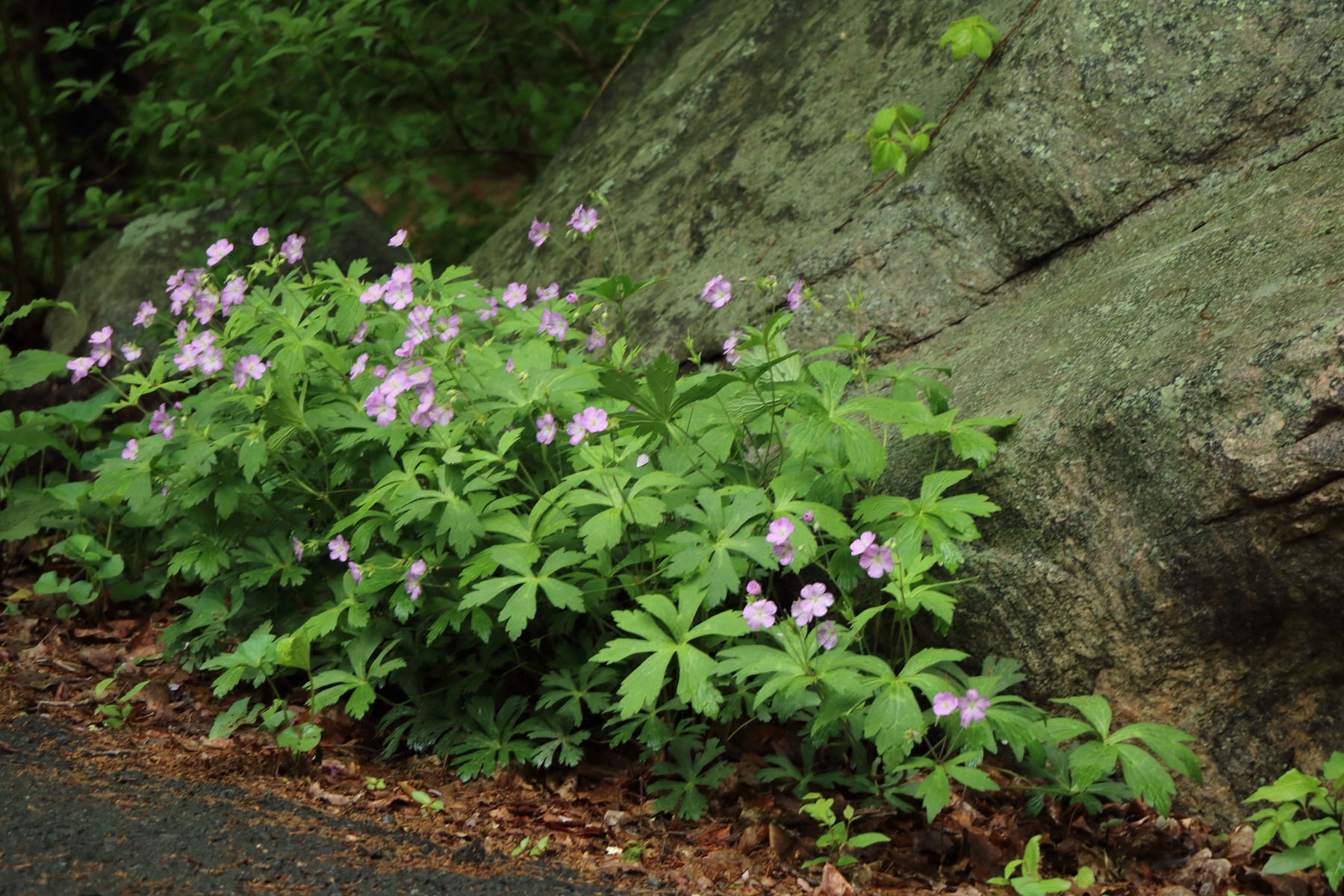
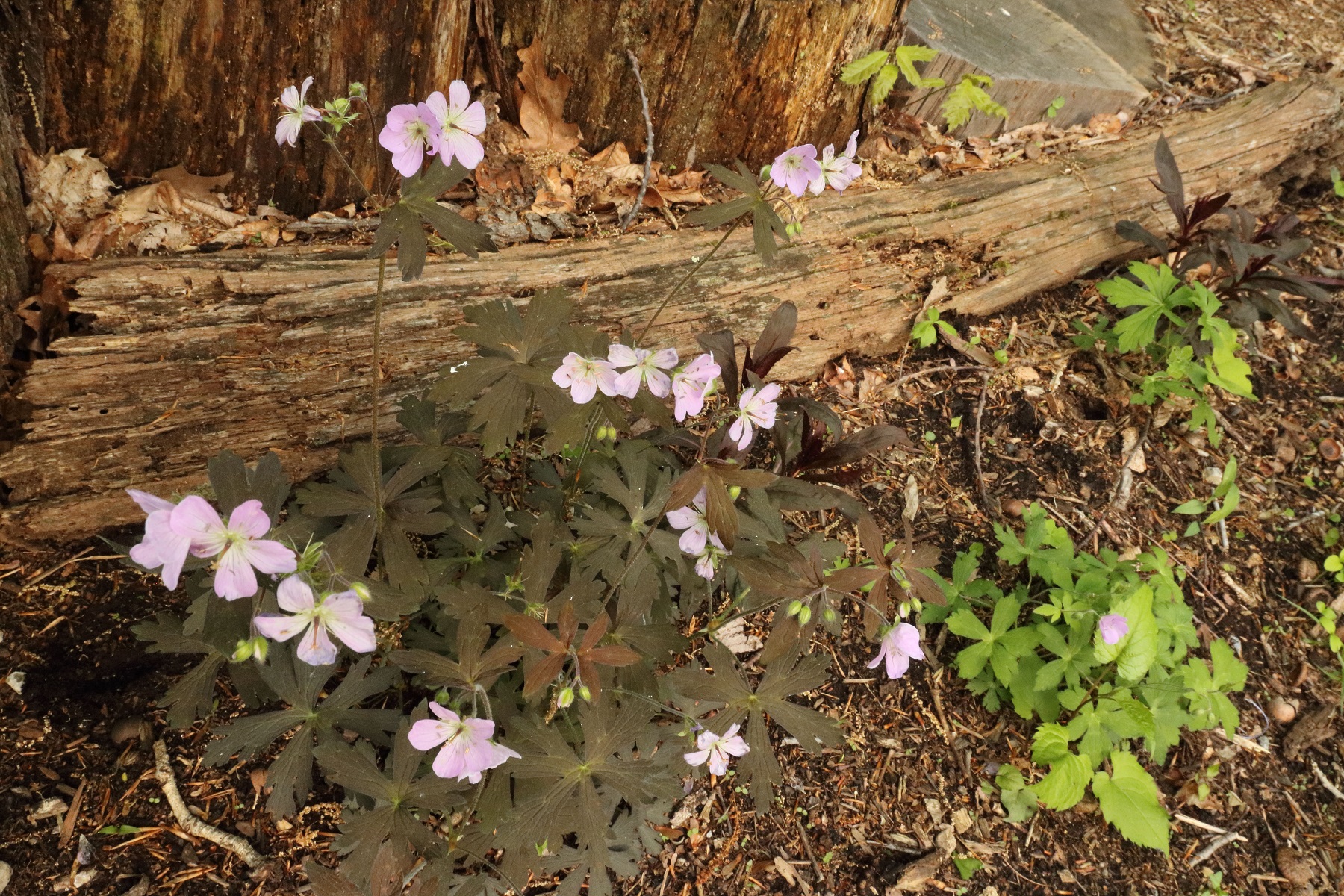
Foam Flower
Foamflower has attractive variegated semi-evergreen foliage with red veins. Nice white flowers appear in spring. We have it growing in quite dense shade under a redbud. Growth habit is usually clumping, but there are also some running cultivars that we are giving a try, because we cannot get enough of these beautiful blooms.
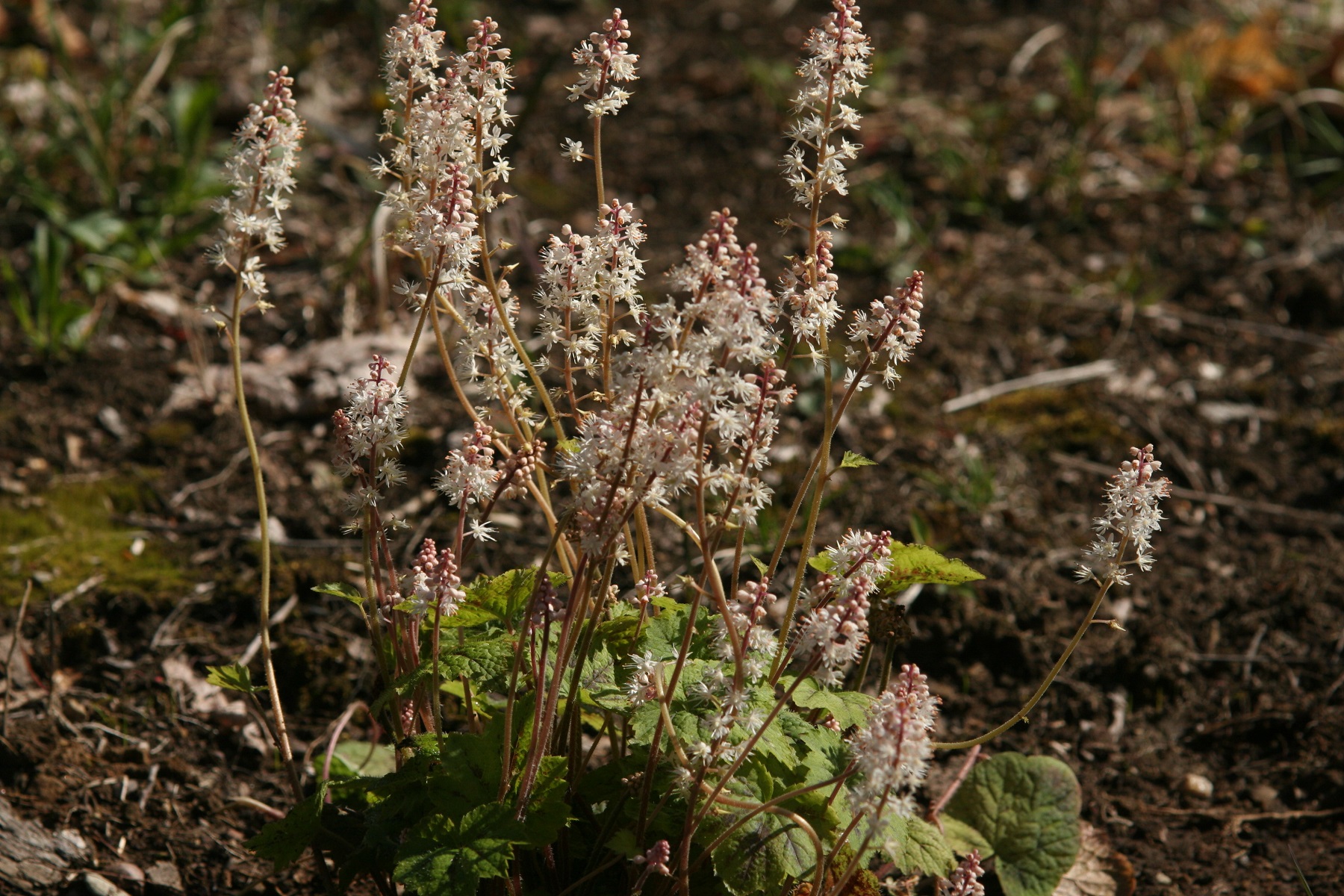
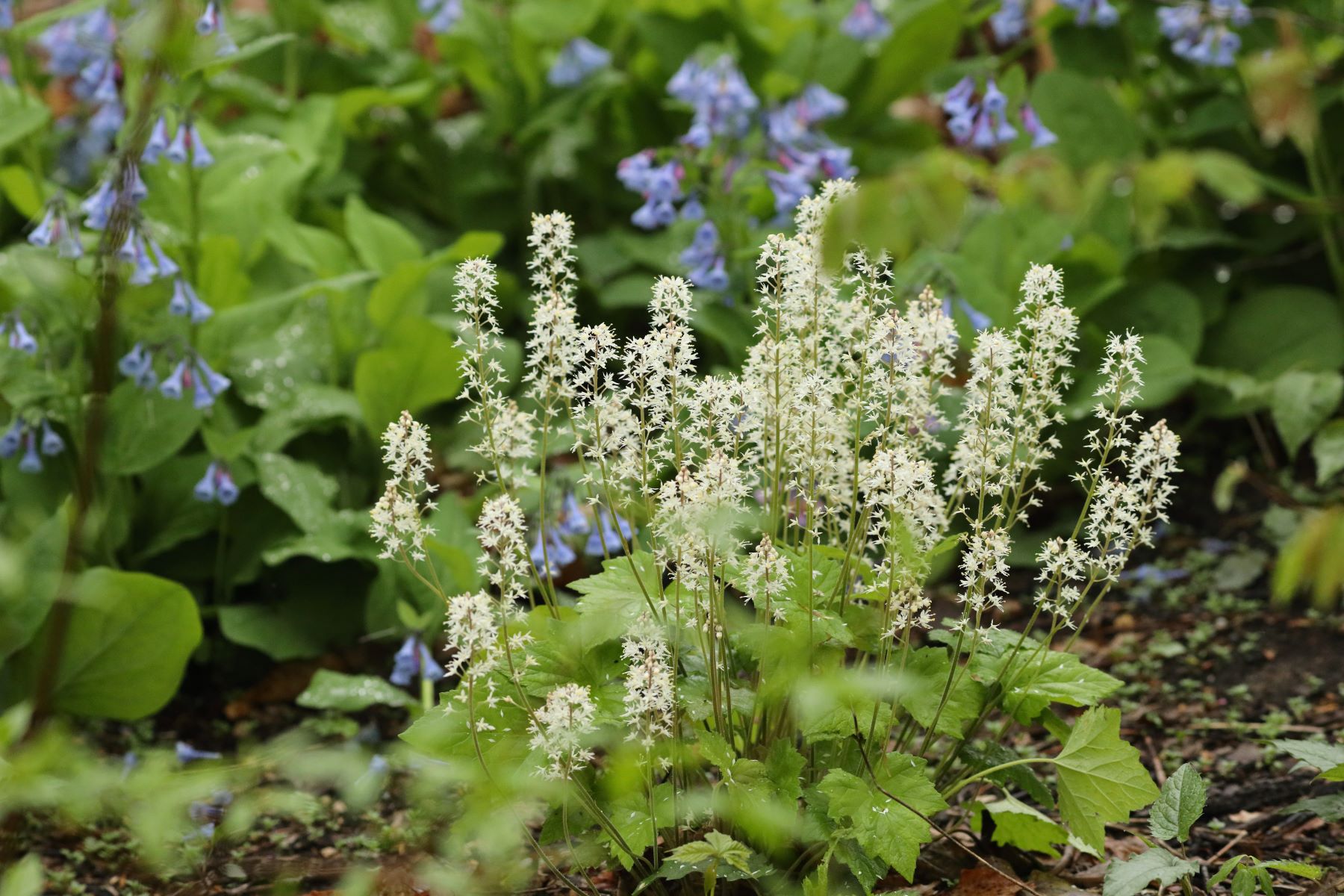
This native vine can creep or climb equally well. It fills in bare soil quite rapidly and climbs over boulders, fences, or up over trees. Good-looking foliage turns red in autumn. Easily overlooked flowers are followed by showy black fruit. Fall color is better in some sun, but the plant is still quite vigorous in shade. We like it as both a ground cover and a climber. It needs space, but is easily pulled from areas where it becomes too weedy.
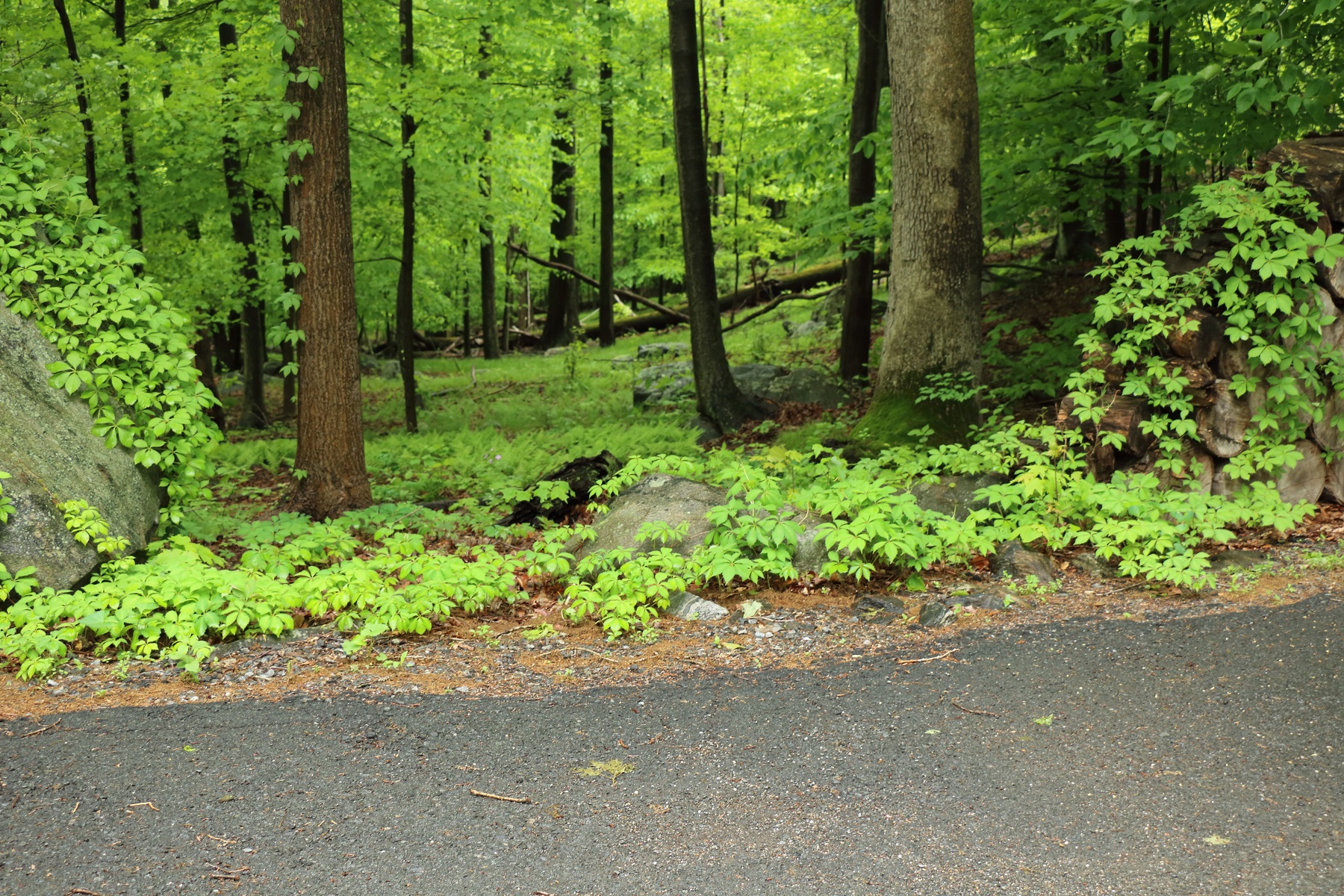
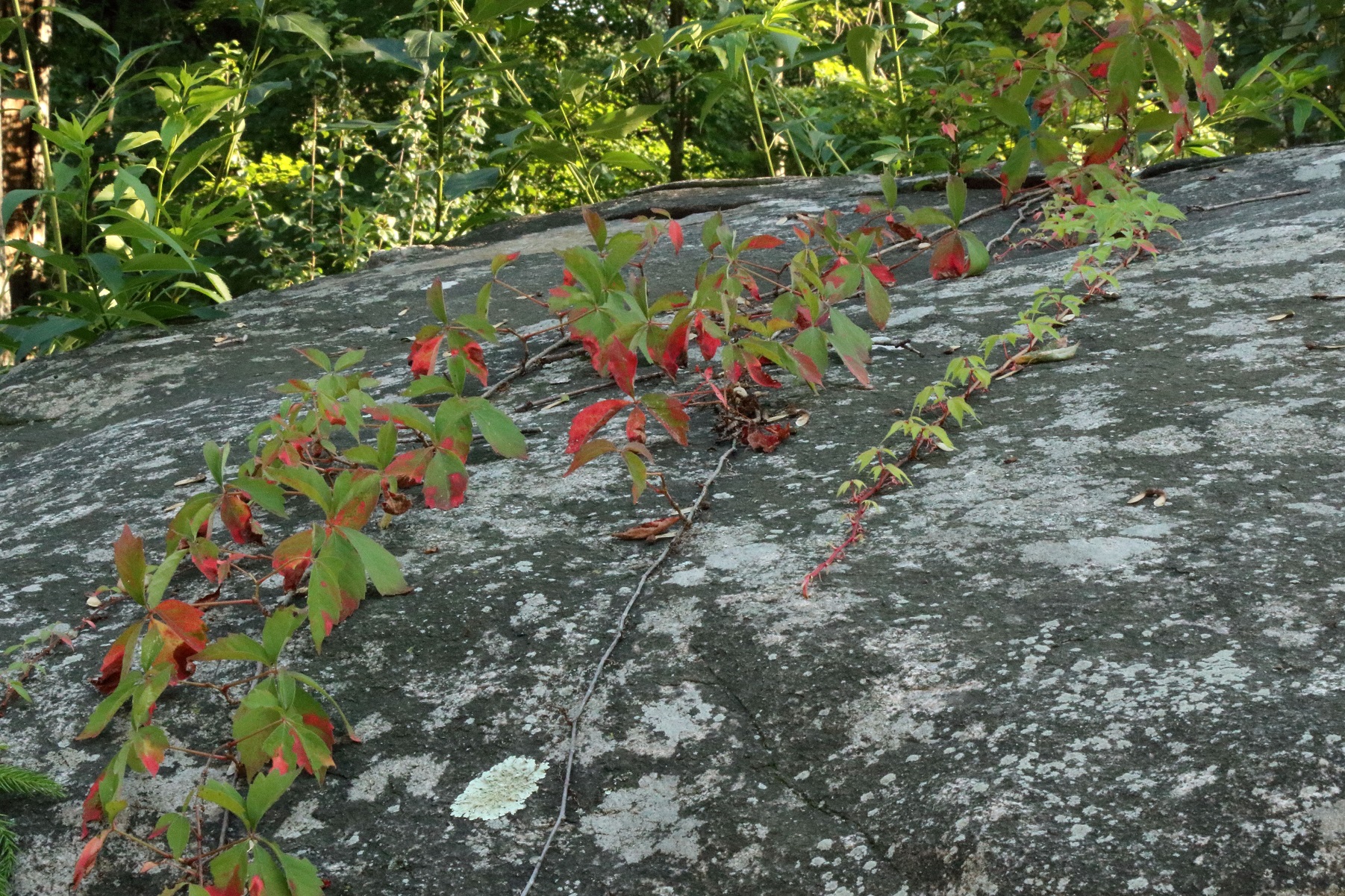
Bluntleaf Waterleaf
Bluntleaf Waterleaf functions as a tall (1-2′) groundcover for shade. Emerging foliage has showy watermarks, which fade after 2 months into green. Inconspicuous flowers are carried under the bold foliage. Deer do nibble on this plant, but they don’t damage it too badly, and the plant can send new leaves up all summer, which have the nice watermarks again. We like Bluntleaf Waterleaf much better than the more common but also more aggressive Virginia Waterleaf species.
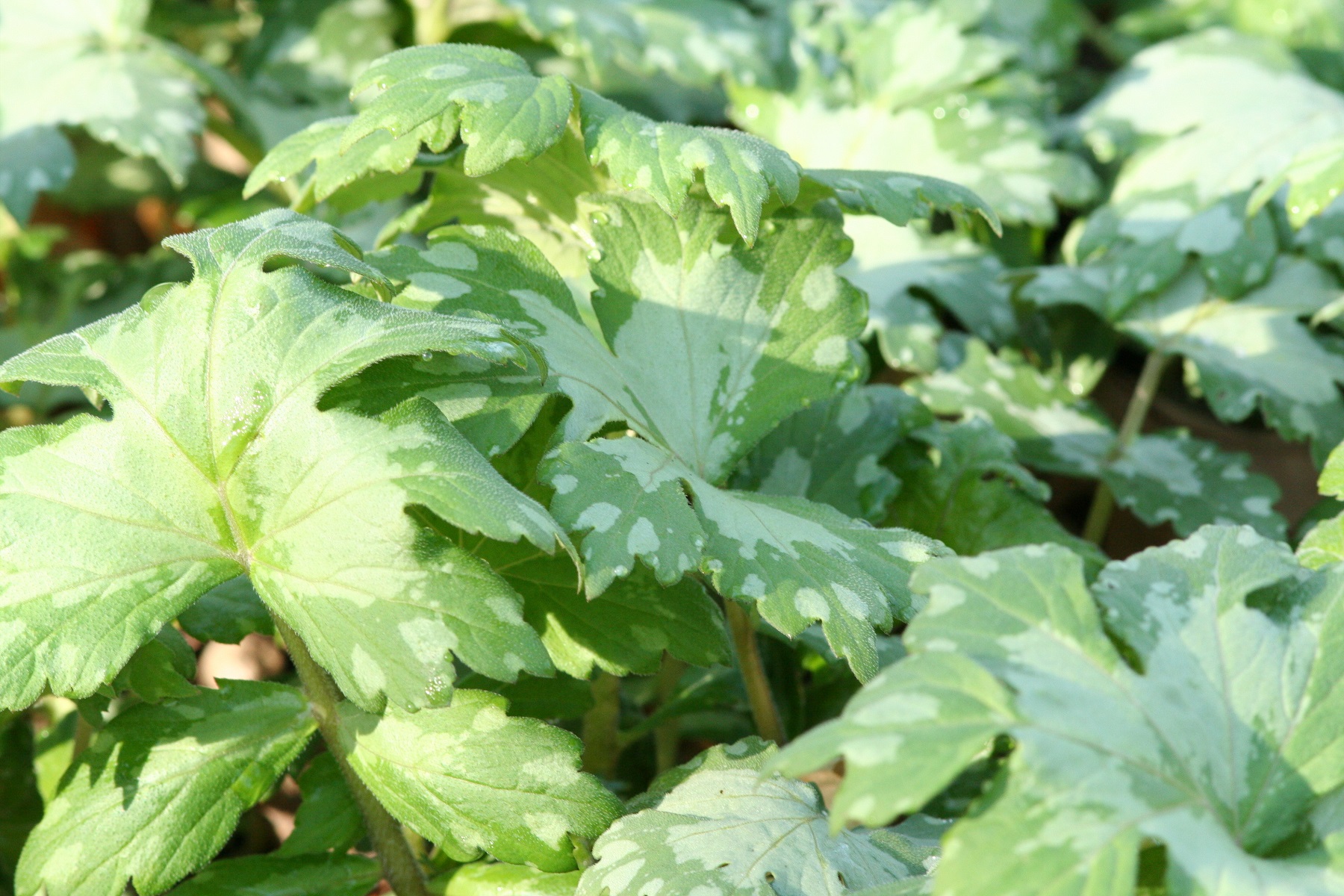
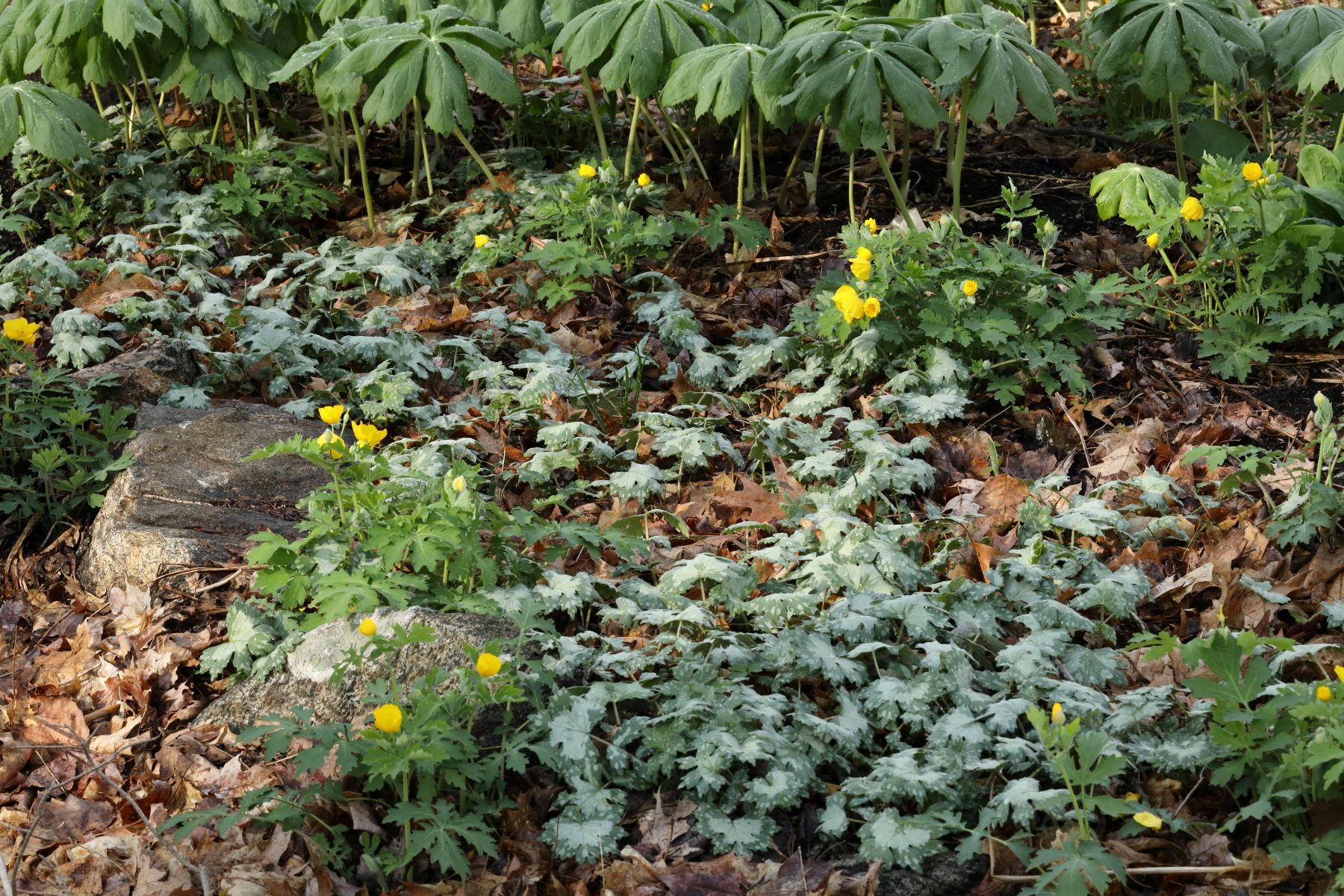
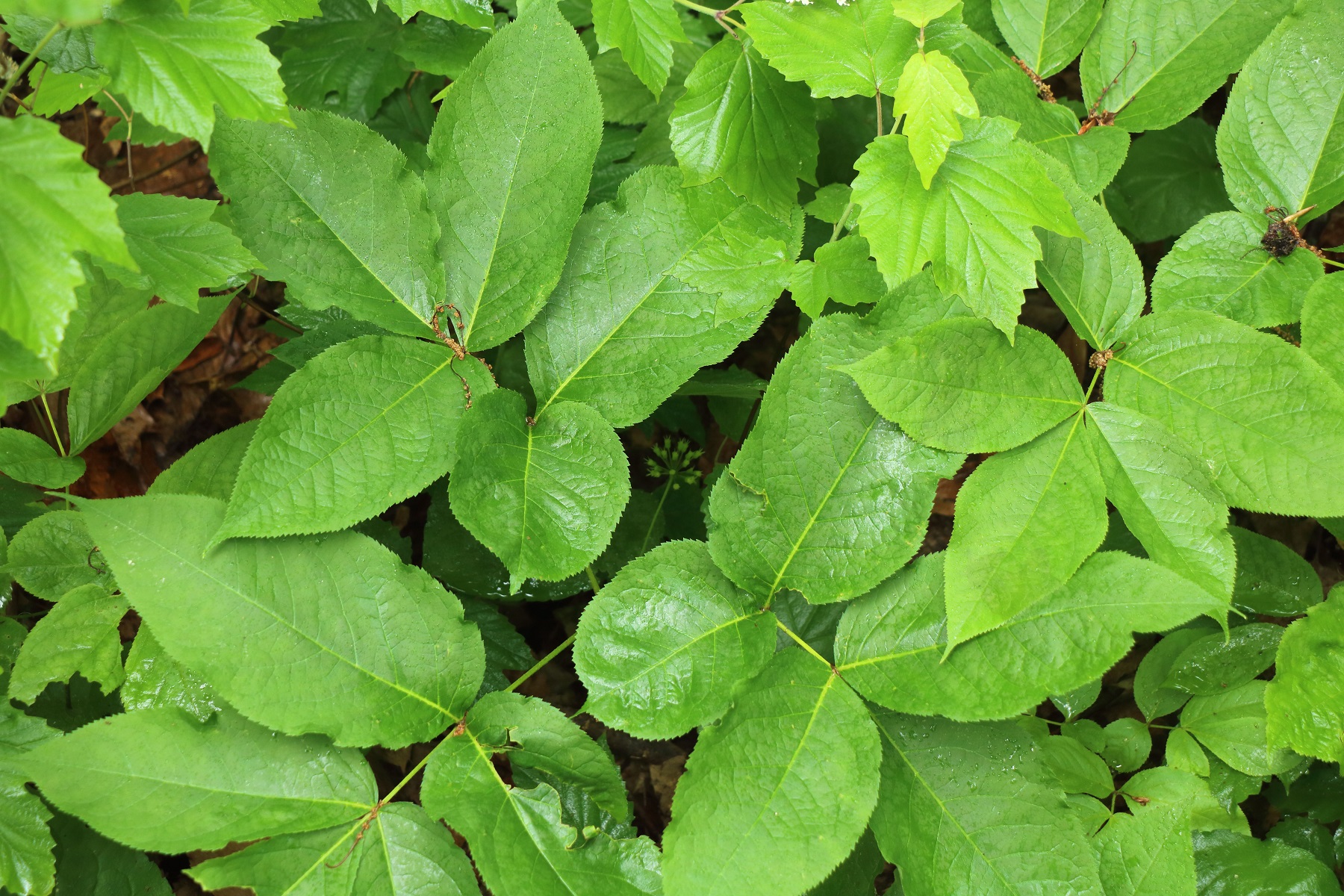
Wild Leek (Ramps)
This edible native spreads slowly by offsets and seed. We wish it would propagate faster, so we could harvest more. Slender green leaves are carried on showy red stems. The foliage is followed by white flowers on their own stems, which produce black seed in autumn.
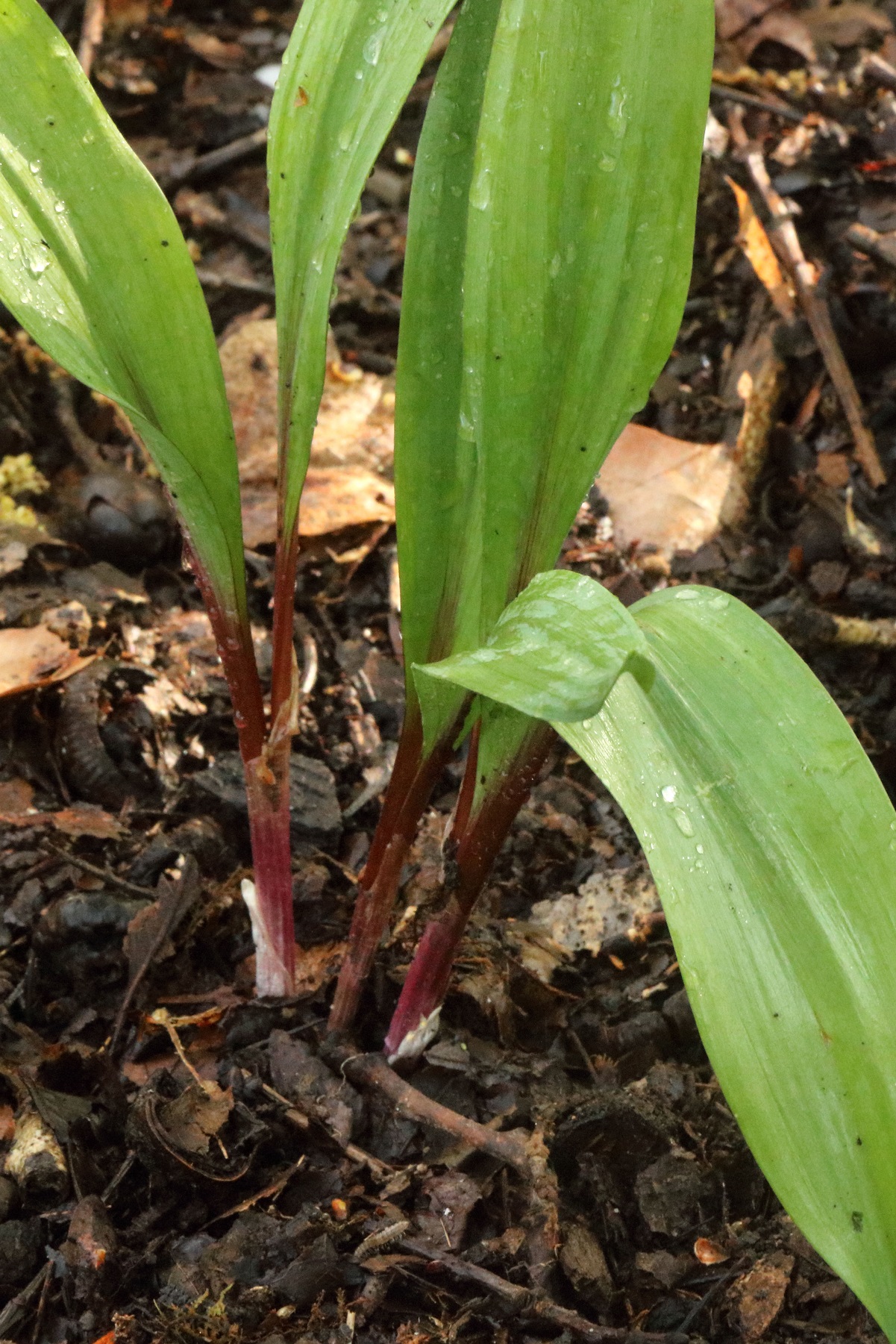
(Wild Leek, Ramps)
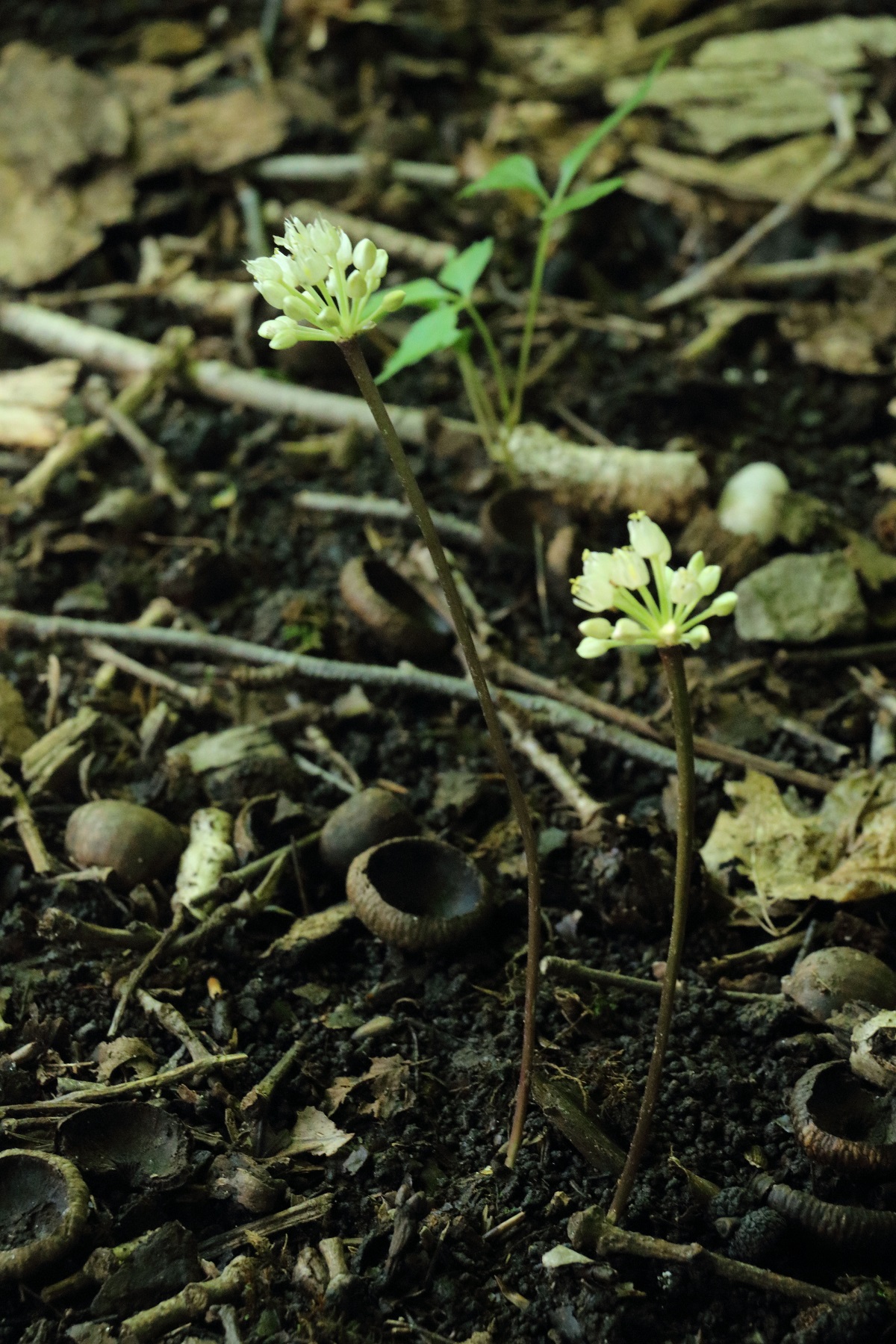
flowers after leaves wither
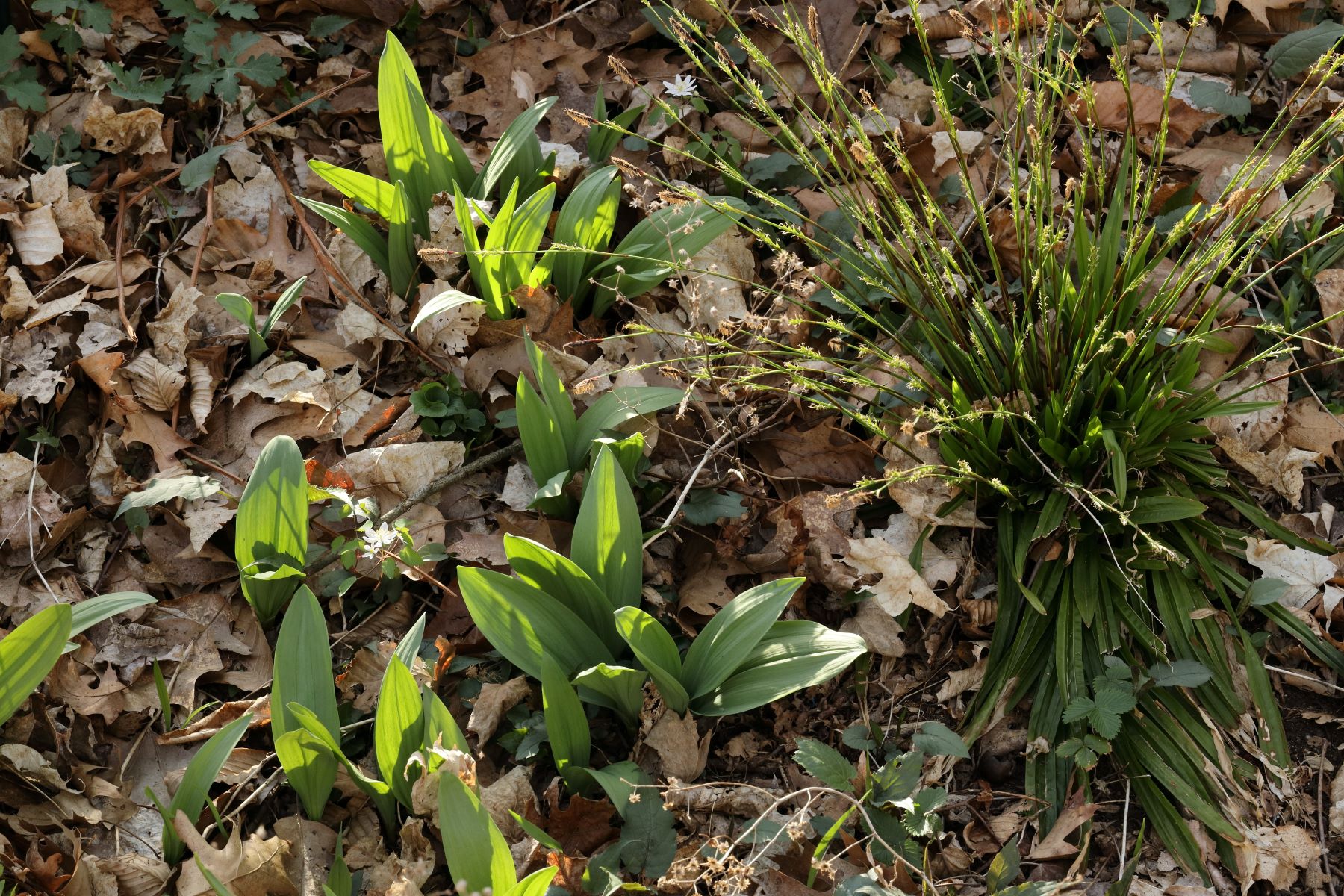
Goldenseal
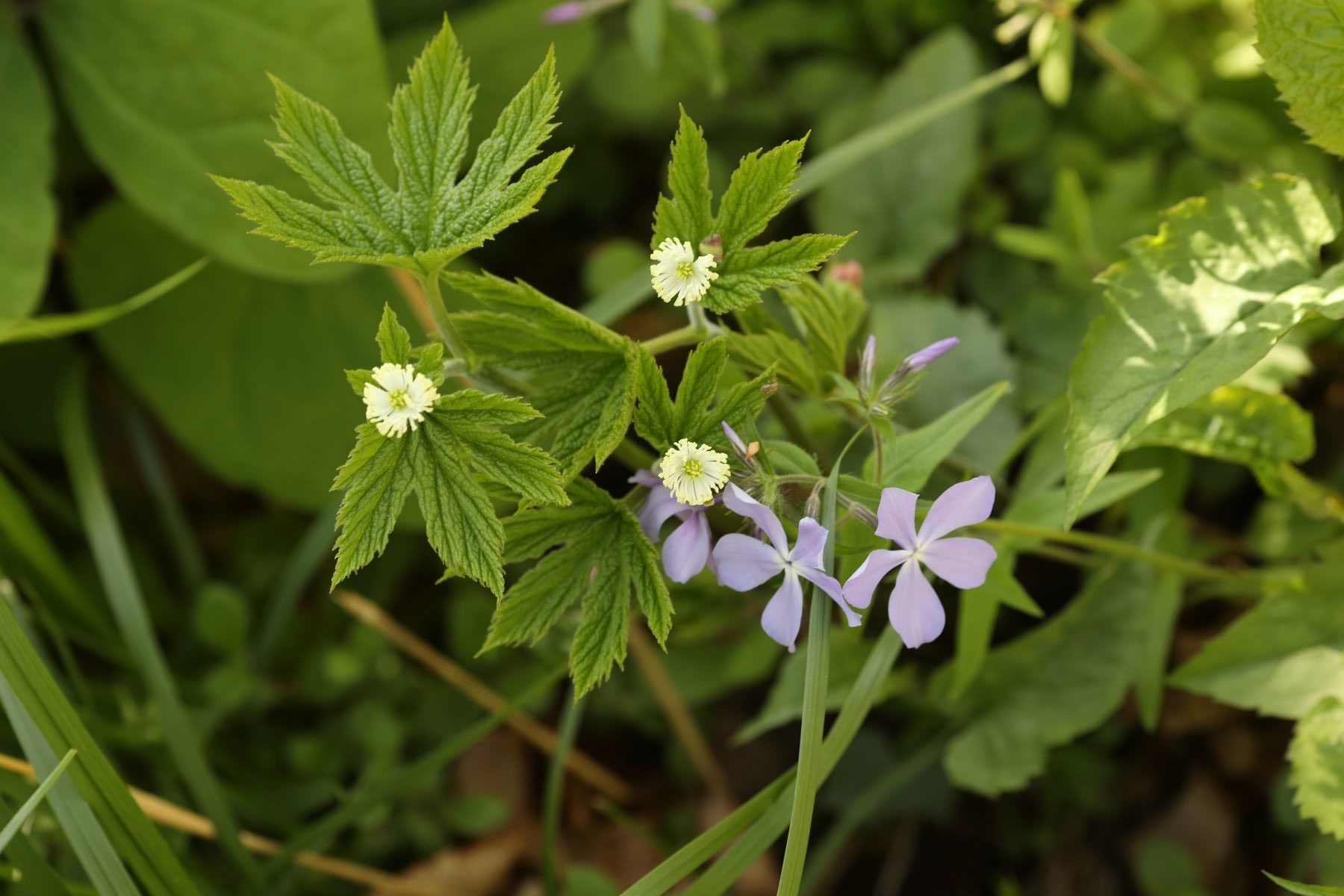
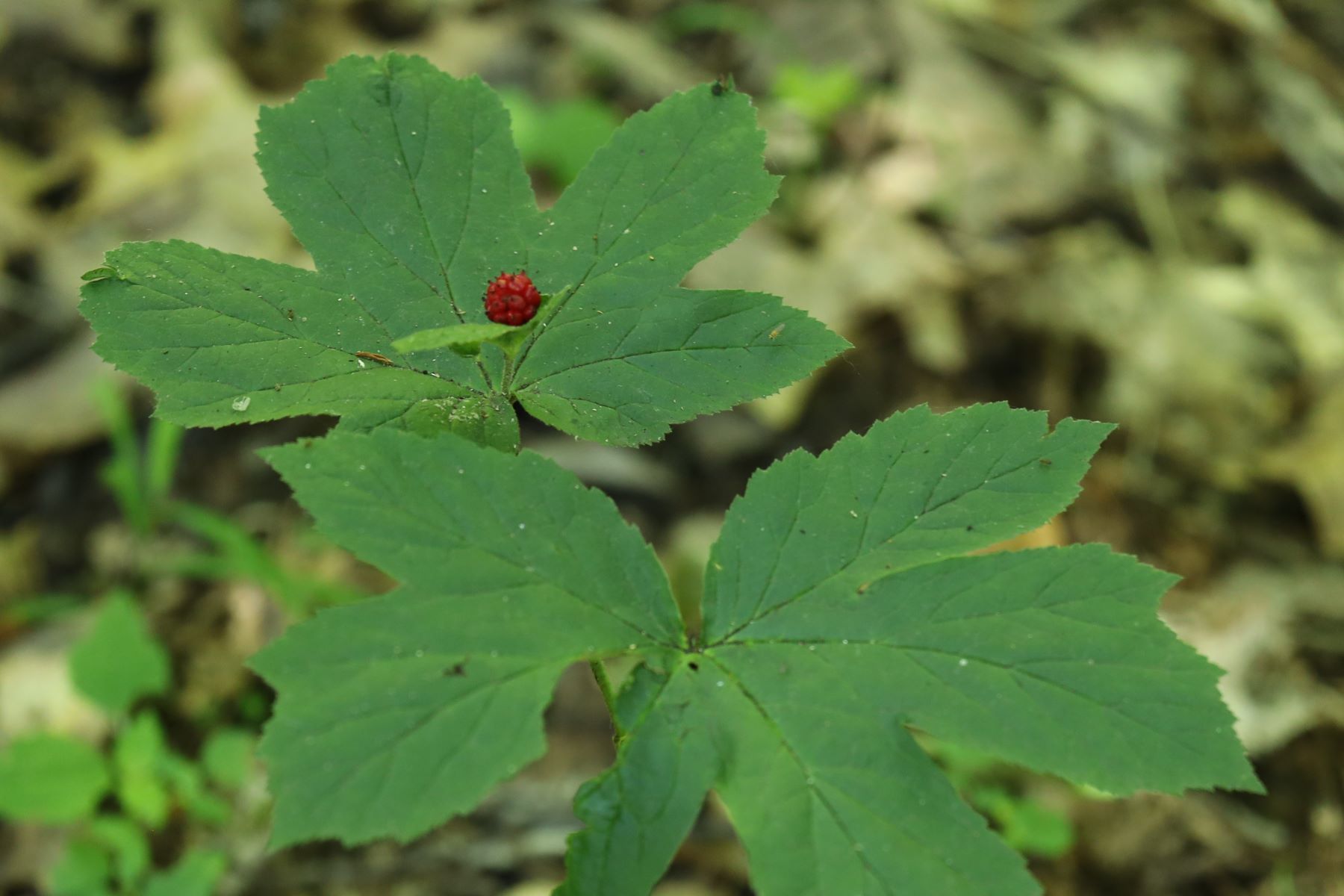
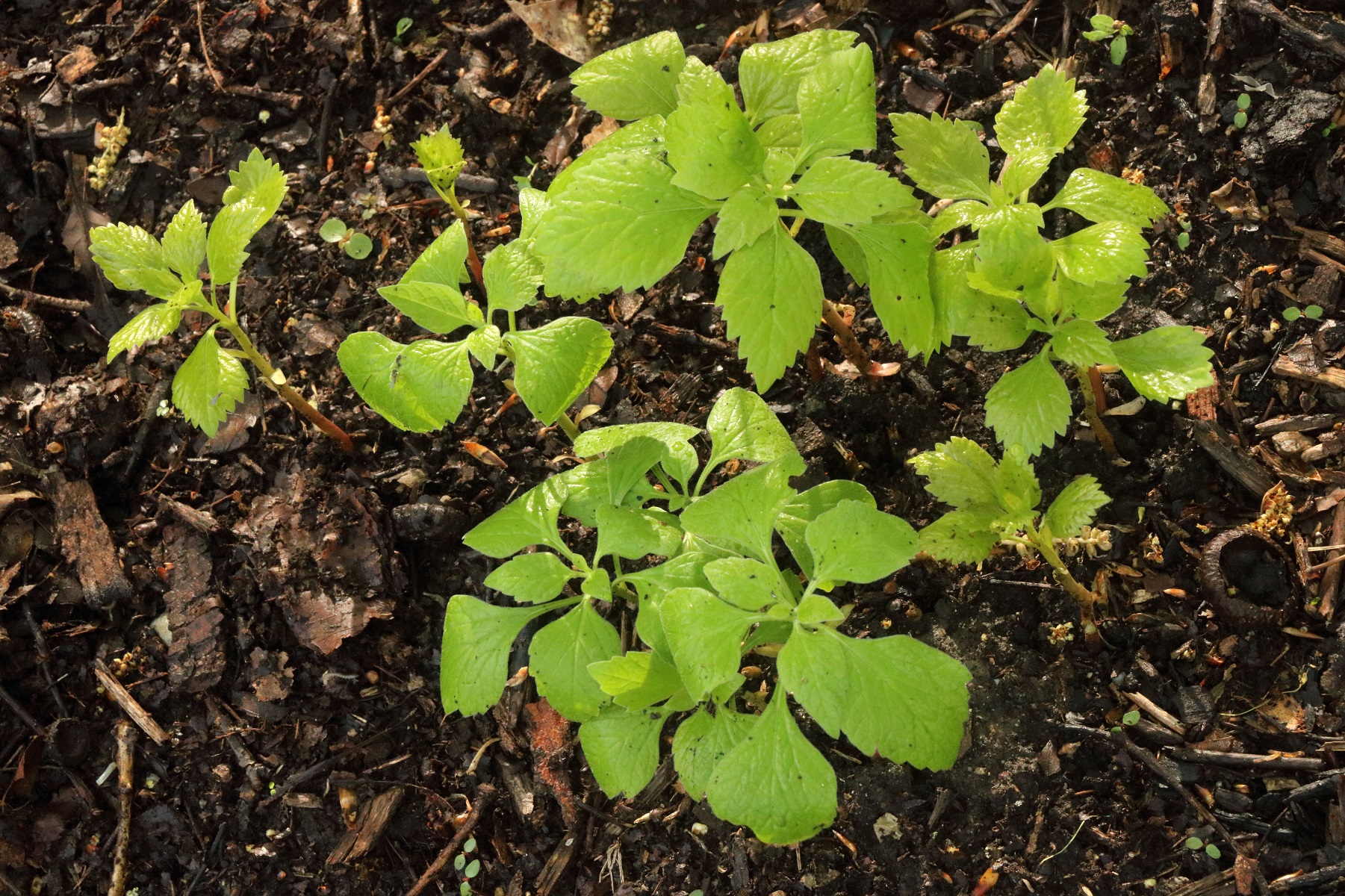
False Hellebore
False Hellebore impresses early in the season with bold foliage emerging from the soil like a rocket and unfolding beautifully. The flowers are not very showy, but in our setting the plant tends to be shaded out by tall summer perennials anyway, so it tends to decline by that time. Nevertheless, each spring we can’t wait for the emergence of this fantastic plant, which is reminiscent of Skunk Cabbage at that time of the year.

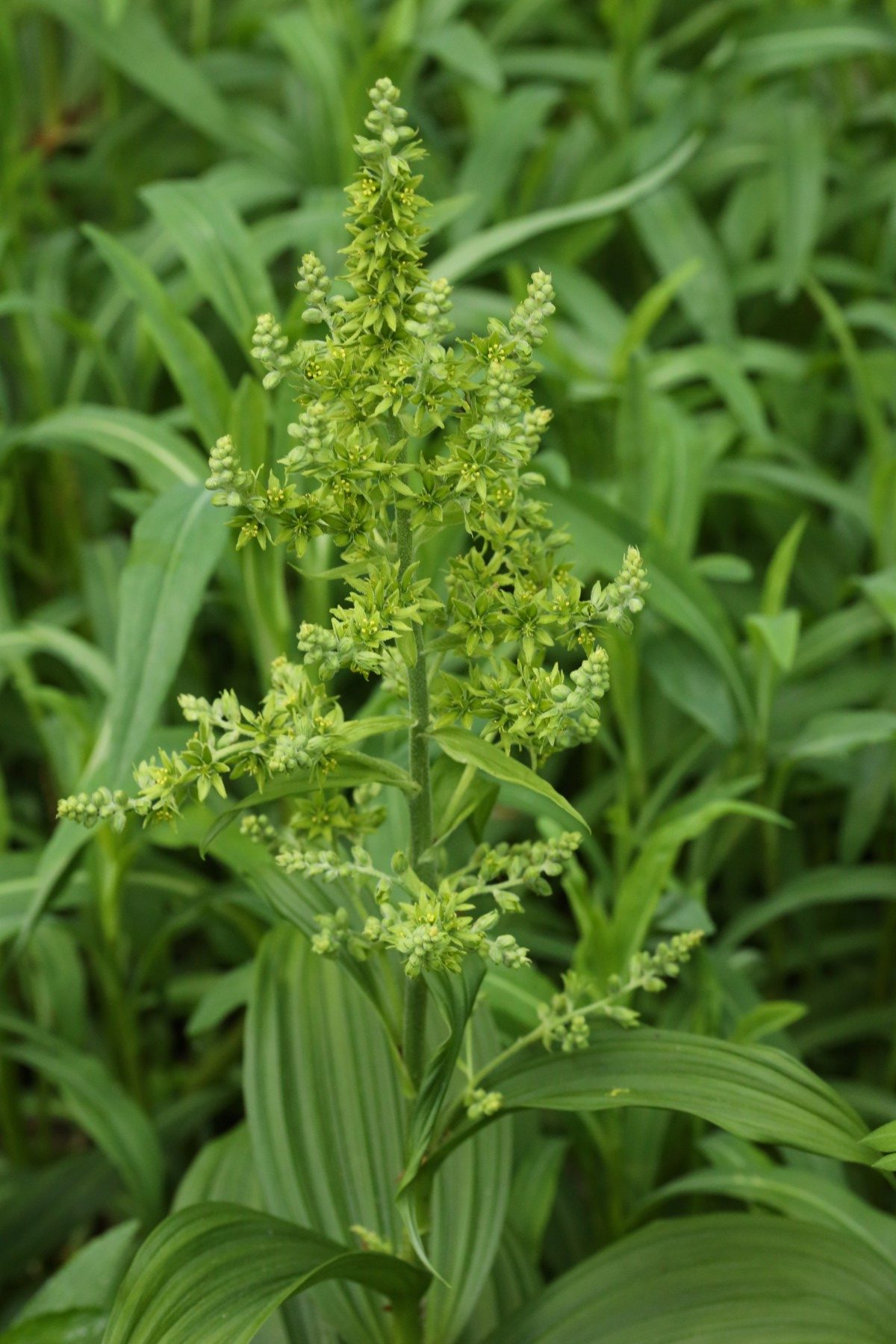
American (Spreading) Globeflower
American Globeflower or Spreading Globeflower has two distinct subspecies, one with white flowers and yellow centers growing in the west, and one with pale yellow flowers growing in the east. The eastern subspecies is becoming increasingly rare and we were fortunate to find this plant for sale at a native plant sale. American Globeflower is a lovely petite spring wildflower blooming quite early. The whole plant continues growing bigger during summer and with luck there is a second bloom in summer. We are growing our American Globeflower in a low/moist area and it seems happy in that environment.


Ohio Spiderwort
Ohio Spiderwort is a tough plant that we have growing in many spots around the woodland garden near paths. In order to see the flowers, you need to visit the garden in the morning. By afternoon Ohio Spiderwort flowers have closed. (This habit is opposite to Evening Primrose, which you will only see blooming in the evenings).
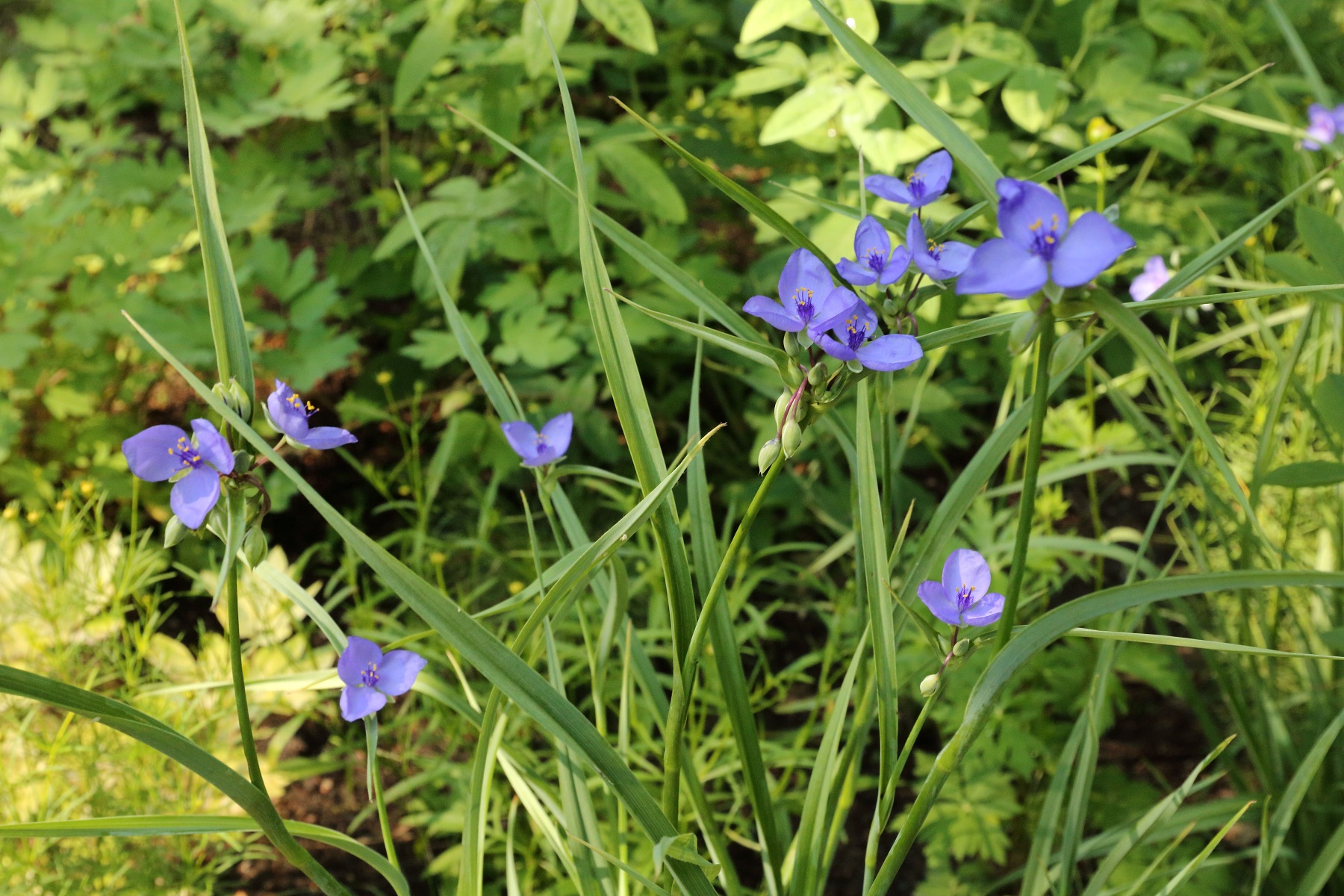
Early Meadow Rue is valued mainly for its nice mounding foliage and early growth / bloom time. The flowers are tiny and not very ornamental, but small insects (flies and wasps) seem to like them.

Bluestem Goldenrod
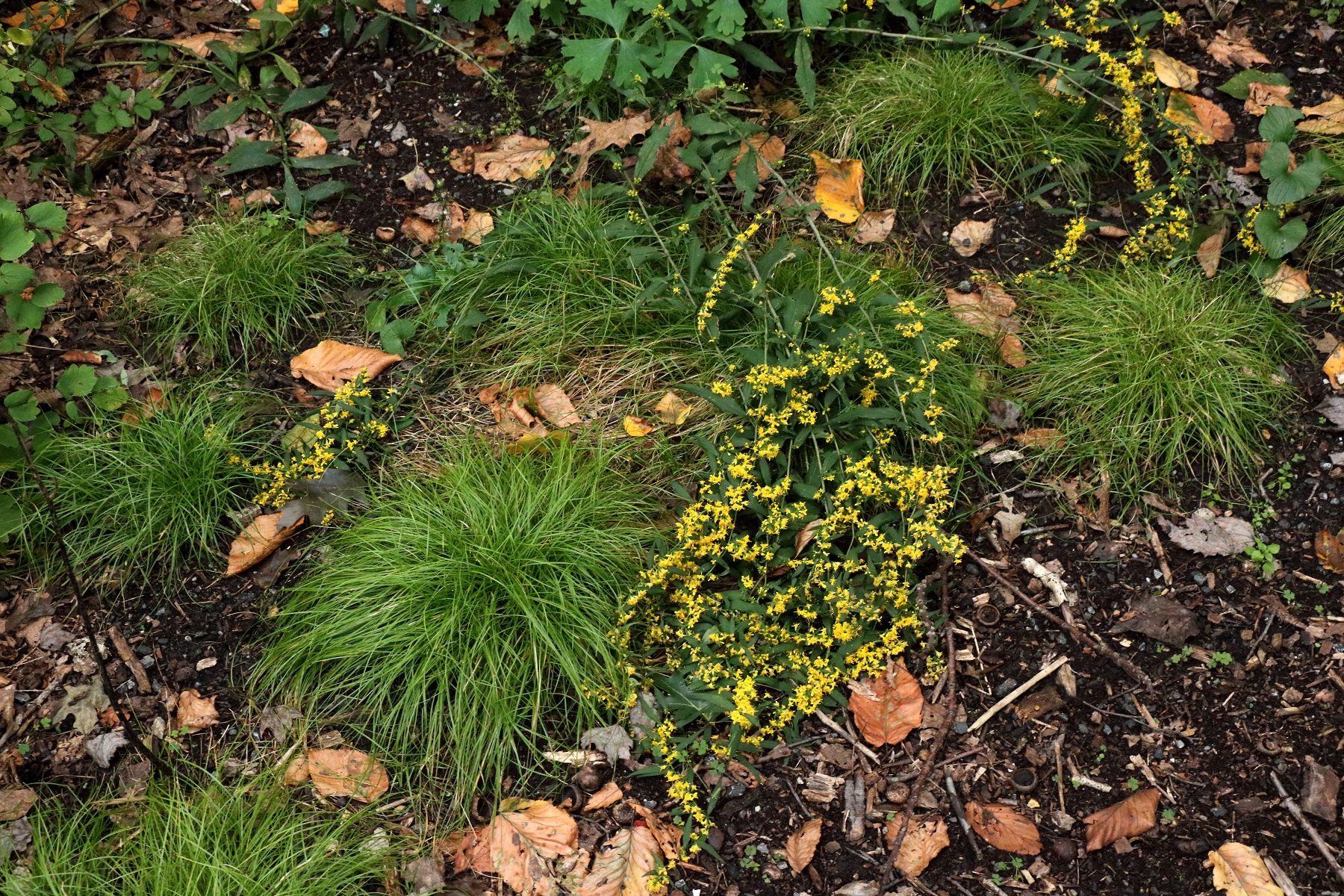
Yellowroot
Yellowroot is a spreading sub-shrub that we try to establish on a slope for erosion control. We chose it because we like to experiment with native plants not usually found in the trade. It does form mats by underground runners, but our local deer have kept it in check by eating most above-ground growth each winter. Brown flowers in early spring are easily missed since they blend in with the soil background.
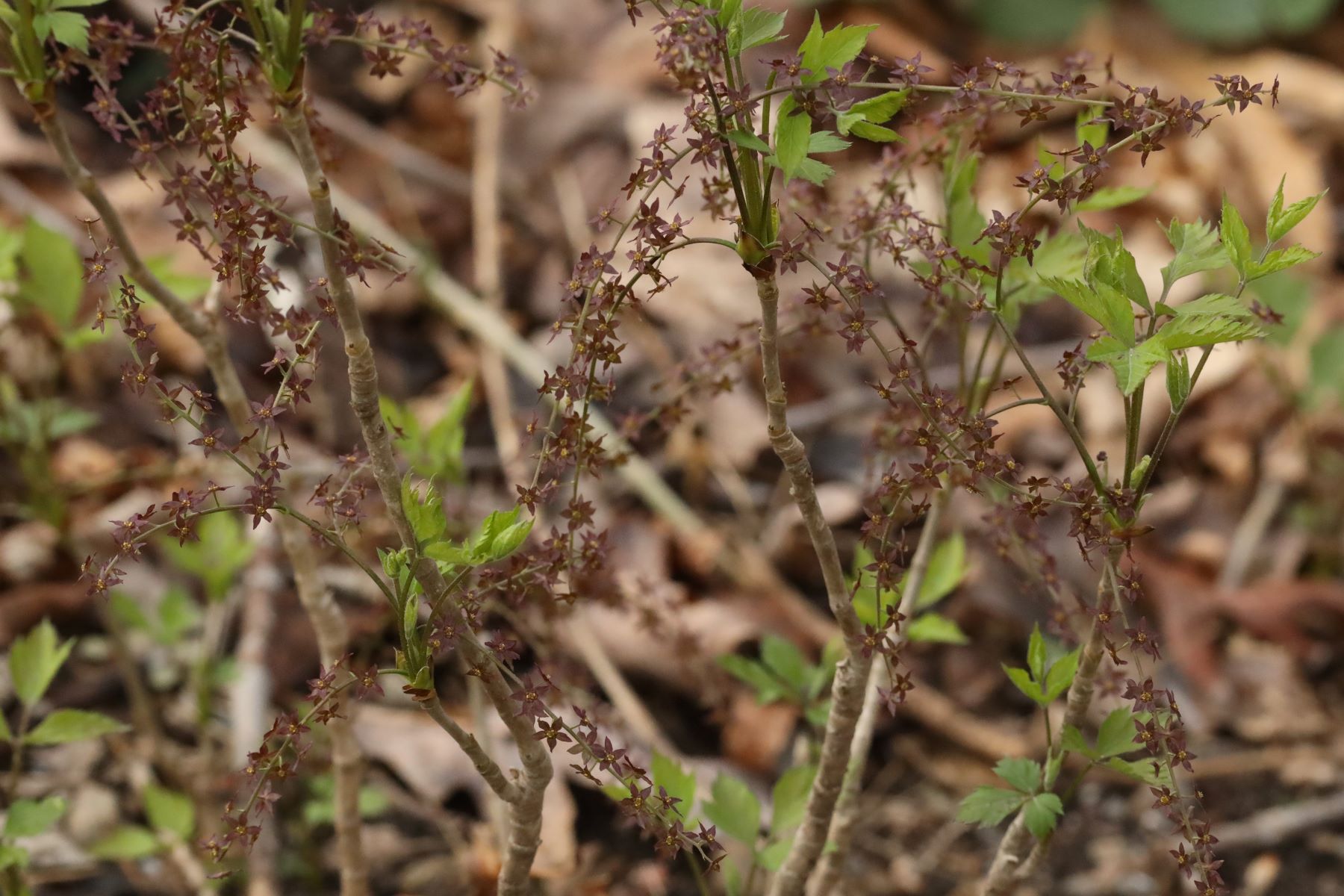

Pipsissewa is a diminutive woodland wildflower that we found growing in a mat of moss. Flowers with white blossoms are followed by red berries.
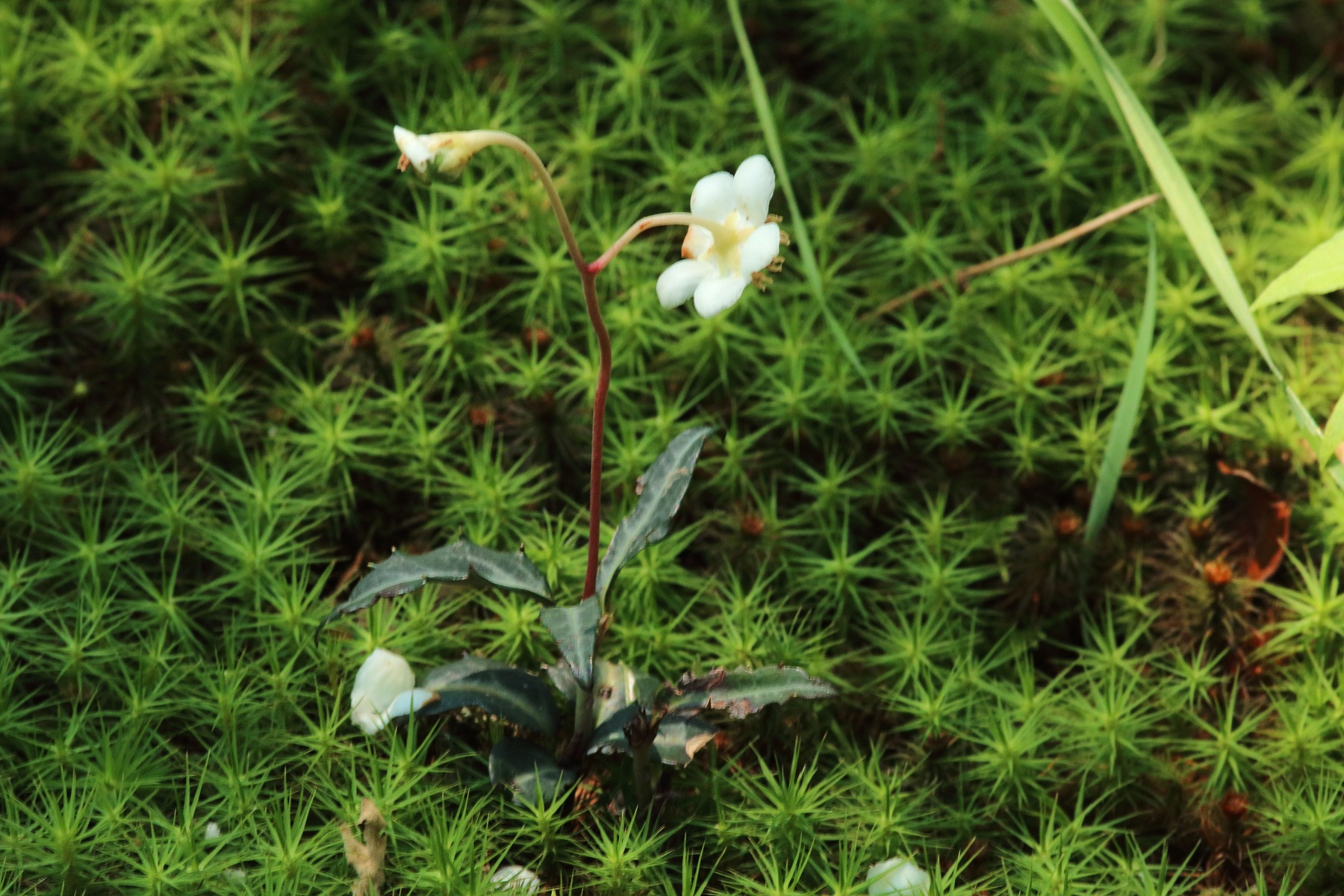
Moss

This intriguing parasitic plant is completely white (no photosynthesis needed). It feeds on a fungus, which in turn feeds on the roots of trees – don’t you love how evolution works! Each leaf-less stem carries one white flower. The flowers initially point downward but become erect later in the season. Indian pipe cannot be transplanted, so create a good woodland environment with symbiotic fungi in the soil and enjoy Indian Pipe wherever it pops up. Interesting even in Winter when the dry plant turns dark and seedheads persist.
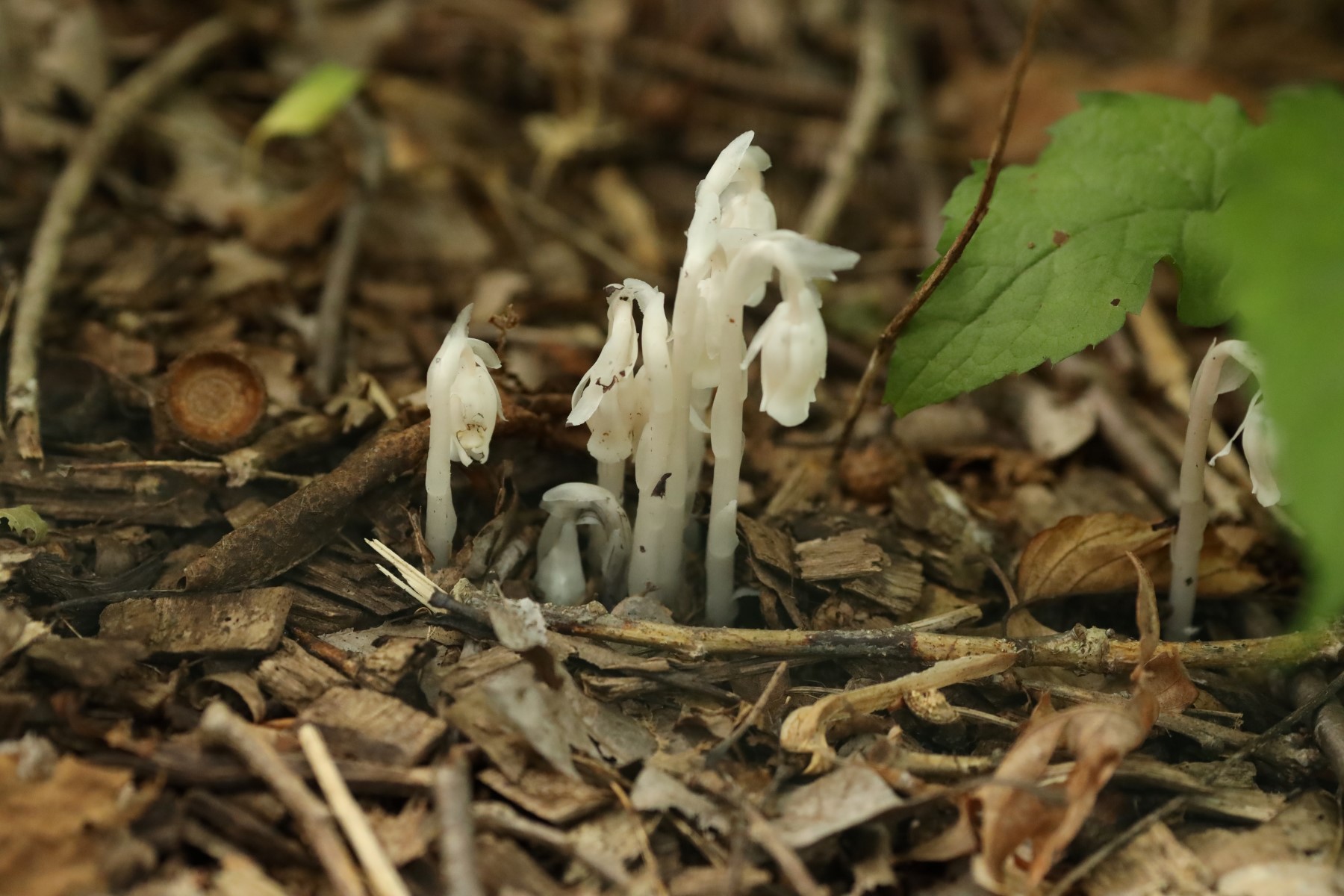
(Indian Pipe)
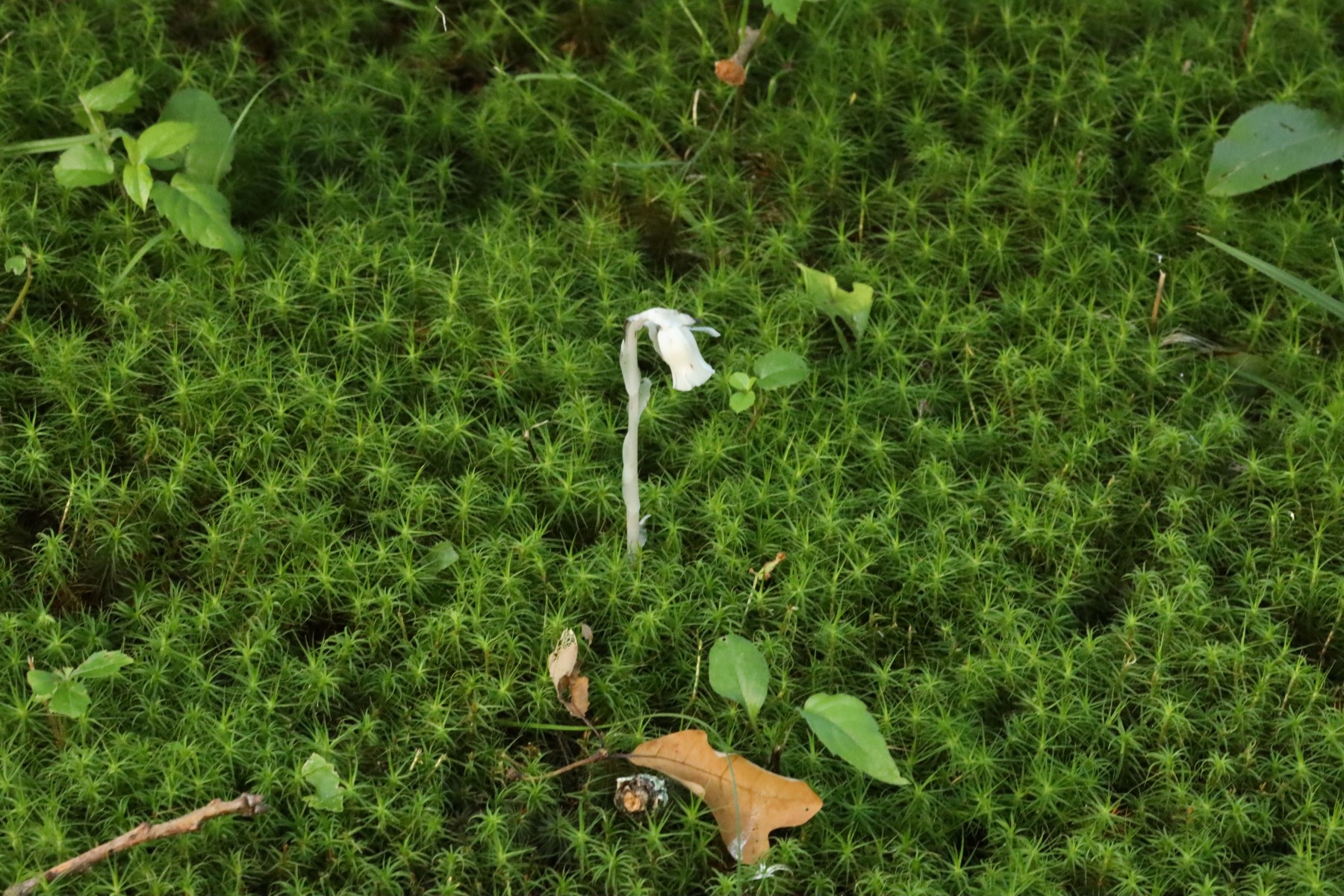
(Indian Pipe)
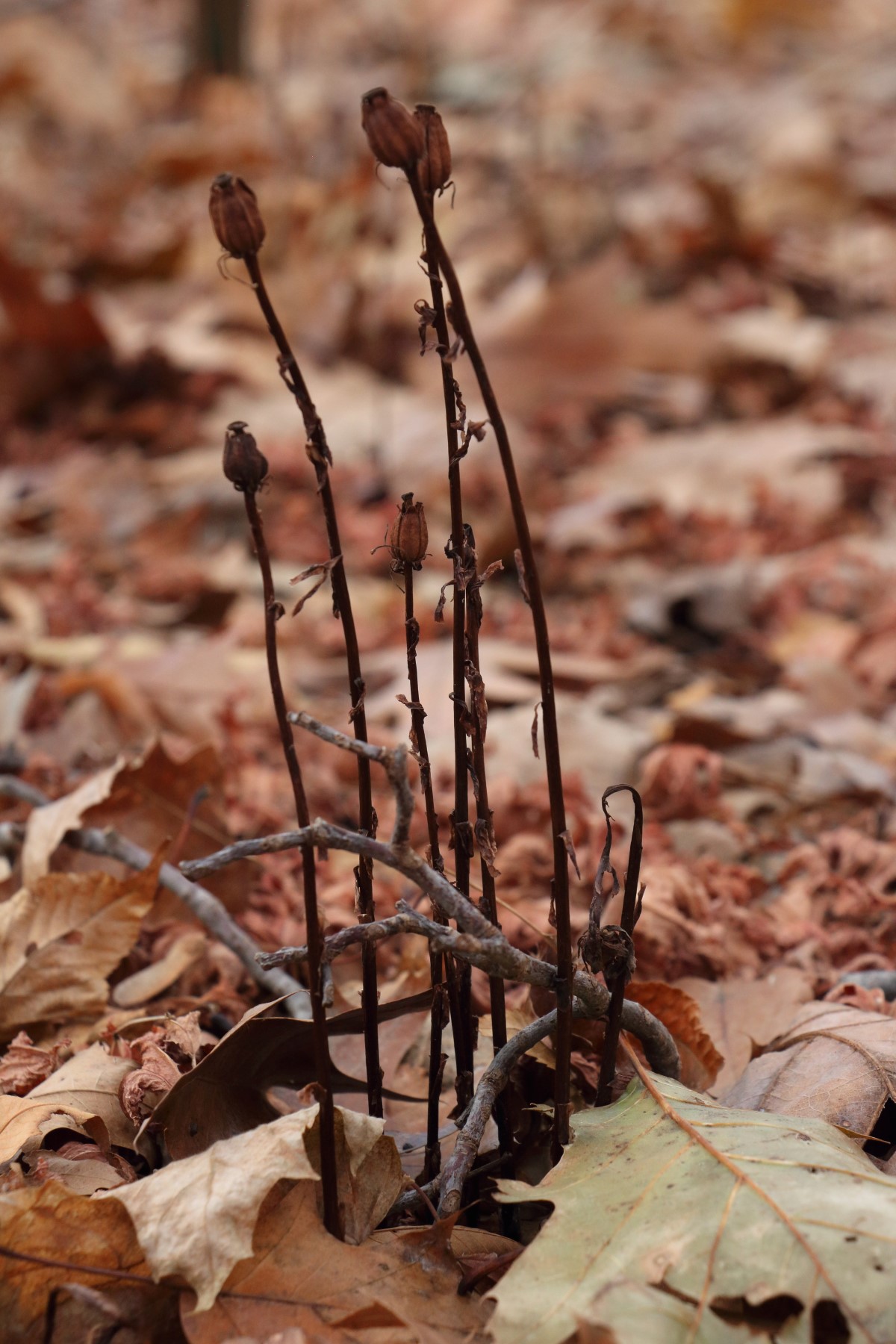
winter
Beechdrops
Beechdrops (Epifagus virginiana)
Mountain Bugbane (Actaea podocarpa): Similar to Black Cohosh but shorter.
Red Baneberry (Actaea rubra): Similar to Baneberry but with red berries.
Coral Bells (Heuchera): Relative of foam flower. Likes poor dry soils.
Purple Meadow Rue (Thalictrum dasycarpum): No review yet. Just seeded in a wet spot.
Bowman’s Root (Porteranthus trifoliata): Pretty flowers but difficult to grow (ours never survived more than 2 years).
Woodland Sunflower (Helianthus divaricatus): Great for covering large areas but may spread too aggressively for mixed plantings.
Meehan’s Mint (Meehania cordata): Diminutive member of the mint family for the shade. Nice flowers visited by hummingbird moths.
Fairy Wand, False Unicorn Root (Chamaelirium luteum): White flower spikes reminiscent of Black Cohosh flowers. No review yet.
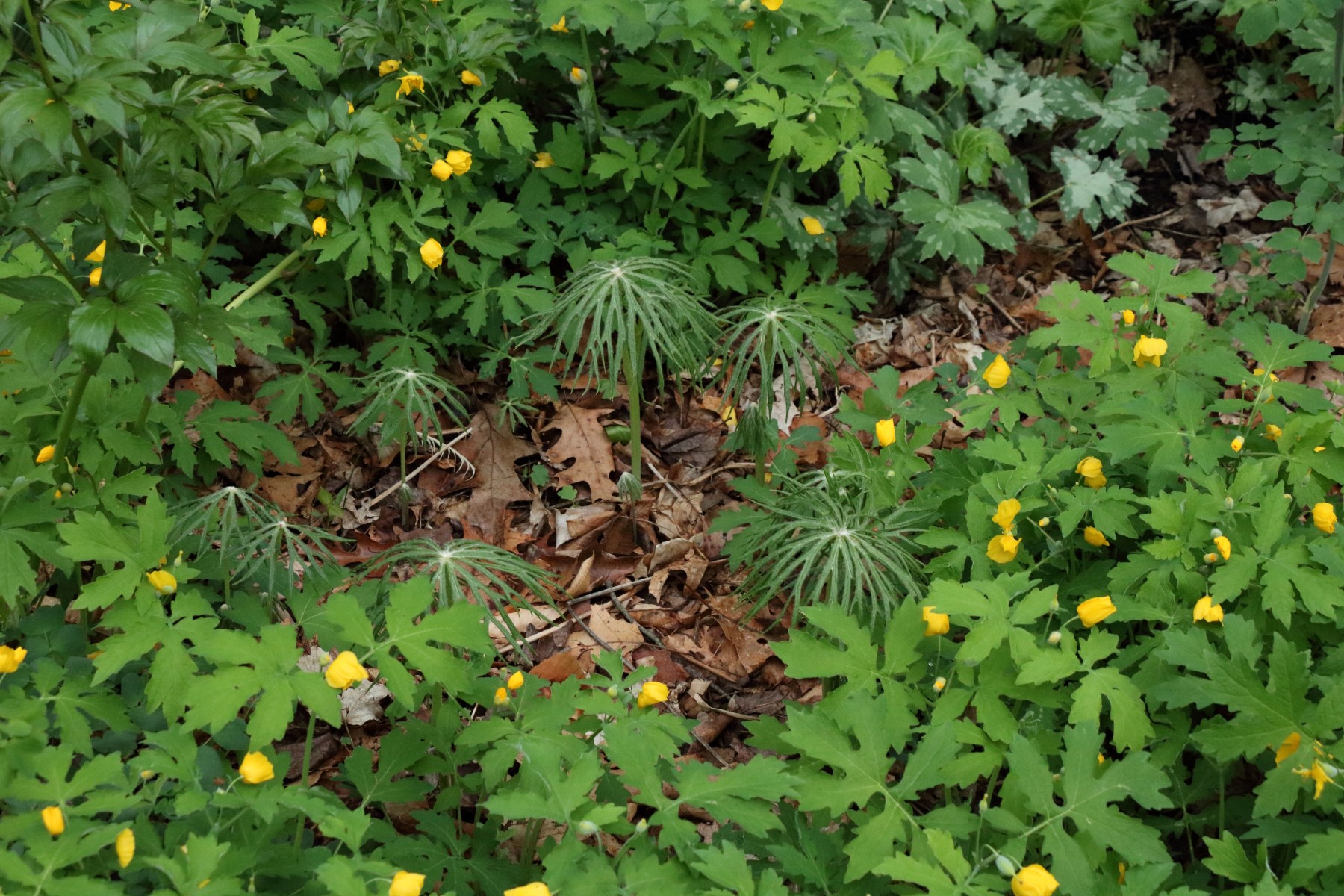
in woodland among Celandine Poppy and Bluntleaf Waterleaf
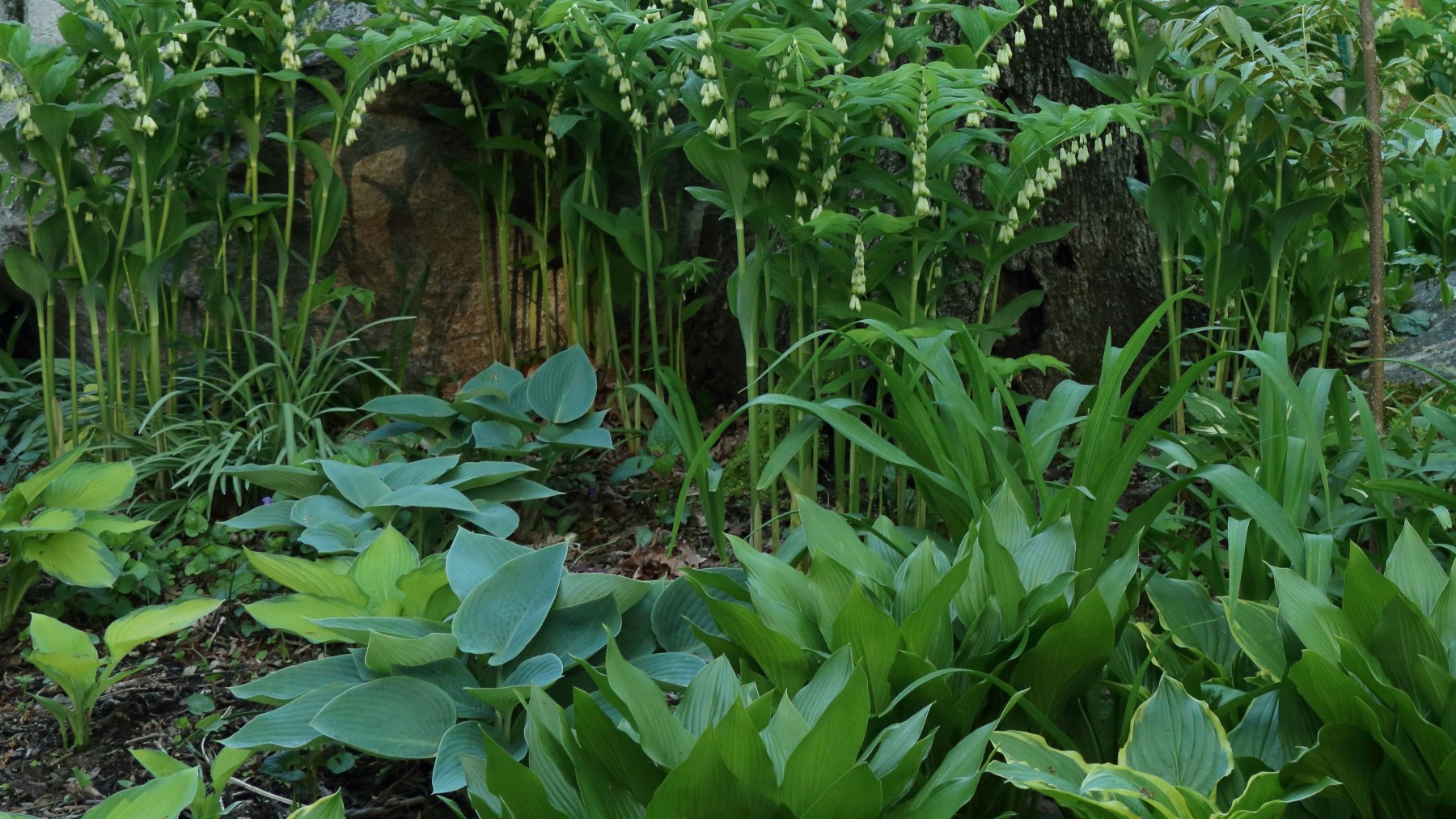
under our native Giant Solomon's Seal